AI trade secrets are a hotly debated topic and can also be called a solution to an emerging need. By checking the SWOT analysis and cost-benefit ratio of AI, it can be known that, shortly, we will understand the performance, future, uses, and limitations of this artificial intelligence (AI) and its commercial use in business. It can be said that the rate of progress will increase. Computer science has made unlimited inventions. It is necessary to evaluate, from a legal point of view, whether this invention of AI will help every small business grow. Connect with us to understand more about AI trade secrets.
- Information must have commercial value to qualify as a trade secret. Because it is kept secret, and this means that the information provides the holder with a competitive advantage.
Trade secrets should be known only to a limited group of people, keeping business information confidential ensures that competitors cannot Gain access to it.
The rightful holder of information should take reasonable steps to maintain confidentiality, such measures may include the use of confidentiality agreements with business partners and employees.
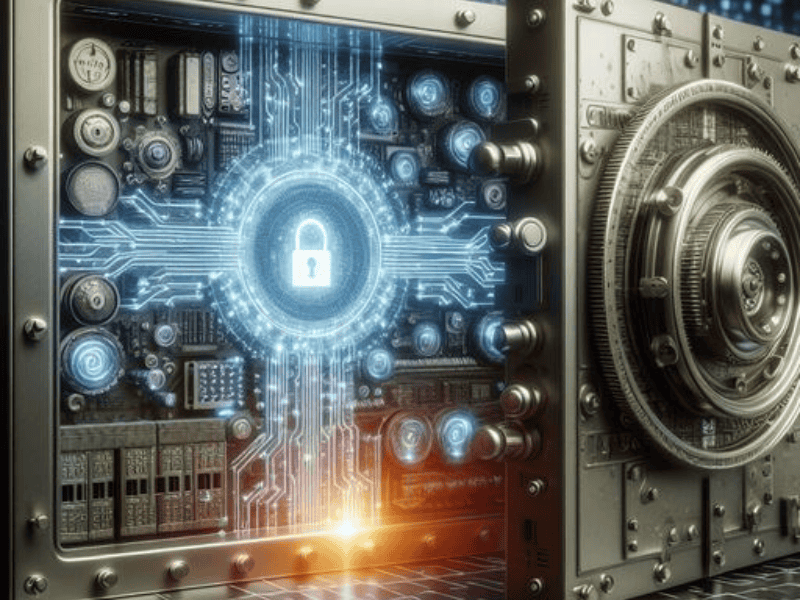
Recently, artificial intelligence systems span various domains, revolutionizing how we approach tasks previously handled by humans. From artistic endeavors to financial transactions, the impact of AI is undeniable. However, this technological leap forward also raises concerns. How can we ensure that artificial intelligence works diligently and safely?
The European Union's Artificial Intelligence Act (AIA) aims to address these challenges by emphasizing human-centric, trustworthy, and ethical AI systems for European markets. In today's article, we have tried to do a thorough analysis of AI with you.
In today's article, we explore the delicate balance between disclosure obligations and trade secret protection in the context of AI. While the technical details of artificial intelligence (AI) often contain information not verified for trade secret protection, exceptions to artificial intelligence also exist. We are navigating together the access and privacy of the AI trade secret through this article, and we explore the tension between protecting critical AI insights and trade secrets. Feel free to take the initiative by commenting on the article or let us know if you want to engage more deeply. Do you know what the future of AI is?
Let’s delve into the world of trade secrets and their significance in the realm of intellectual property.
A trade secret is a form of intellectual property (IP) that revolves around confidential information. Unlike other registered IP rights, trade secrets are not publicly disclosed. Instead, their owners safeguard this valuable information from competitors by implementing special procedures and both technological and legal security measures.
For information to qualify as a trade secret, it must meet the following criteria:
The information is valuable because it is secret.
Only a restricted group of individuals knows about it.
The rightful holder takes reasonable steps to keep it confidential, including using confidentiality agreements with business partners and employees.
In the previous paragraph, we tried to find out what AI trade secret?. Now let us try to know about trade Secret versus other intellectual property Let’s compare trade secrets with forms of IP:
Patents protect inventions and grant exclusive rights for a specified period. However, patents require full disclosure, whereas trade secrets remain undisclosed.
Copyrights safeguard creative works (e.g., literature, music software). Unlike trade secrets, copyrights are publicly registered.
Trademarks protect brand names, logos, and symbols. They are publicly registered, whereas trade secrets remain confidential.
Trade secrets encompass confidential information (e.g., formulas, know-how) that provides a competitive edge. They are not recorded with authorities but are crucial components of IP portfolios.
In the field of artificial intelligence (AI) @ Machine learning, trade secrets play a pivotal role. Companies often guard their proprietary algorithms, training methodologies, and unique data processing techniques as trade secrets.
By doing so, they maintain a competitive advantage without revealing their inner workings to the public. These undisclosed AI trade secrets contribute significantly to innovation and technological advancements.

In the previous first paragraph, we tried to know what is an AI trade secret? And in the second paragraph, we tried to learn about the sense of AI trading secrets. Now in the third paragraph, let us explore the fascinating world of AI trade secrets and how they can be effectively protected.
AI-generated information and related components can indeed qualify as trade secrets. Here’s what can be protected:
The intricate sets of rules or instructions that AI systems use for data analysis or problem-solving can be safeguarded as trade secrets1. These algorithms often form the backbone of AI applications.
The data used to train AI models, whether supervised or unsupervised, can be considered a trade secret. These datasets are valuable and unique to each organization.
Aggregated data, patterns, and compilations used in AI processes can also fall under trade secret protection.
Proprietary code that powers AI systems can be kept confidential as a trade secret.
Identifying valuable AI trade secrets involves considering the following factors:
Trade secrets must have independent economic value due to their confidentiality. If the information provides a competitive edge, it meets this criterion.
The information must remain undisclosed and not be generally known or readily ascertainable. AI-generated content that only the AI system knows qualifies.

Let’s delve into the importance of protecting machine learning/Artificial Intelligence AI trade secrets and explore the legal framework, strategies, and enforcement aspects.
Trade secrets play a crucial role in safeguarding AI innovations. Here’s why:
AI trade secrets provide a competitive edge. By keeping algorithms, training data, and unique methodologies confidential, companies maintain an advantage over rivals.
Unlike patents, which involve public disclosure and formal registration, trade secrets are cost-effective. No government agency needs to approve or grant protection
Trade secrets can last indefinitely as long as they remain undisclosed and valuable. Patents, on the other hand, have limited terms.
Trade secrets allow creators to protect a wide range of AI-related information, from algorithms to data sets, without adhering to rigid patent requirements.
To effectively protect AI trade secrets, consider these strategies:
Limit access to sensitive AI information. Only authorized personnel should handle AI trade secrets.
Use non-disclosure agreements (NDAs) with employees, contractors, and collaborators. These agreements legally bind the parties to maintain secrecy.
Employ robust security protocols to prevent unauthorized access or leaks.
Secure physical locations where AI trade secrets are stored.
Educate and well-train your staff about the importance of confidentiality and their role in protecting trade secrets.
When breaches occur:
Promptly investigate any suspected breaches.
If necessary, pursue legal action against violators. Remedies may include injunctions, damages, or restitution.
Understand that trade secret laws vary globally. Seek legal advice tailored to the relevant jurisdiction.
Maintain records of trade secret protection efforts. This documentation strengthens legal claims in the case of legal disputes.

Let’s delve into the fascinating intersection of AI trade secrets and the challenges they pose.
Generative AI platforms, including large language models, have revolutionized content generation by analyzing data and producing original work based on training data and user prompts. However, these tools also present a unique threat to a company’s trade secrets. Here’s why:
Employees using generative AI applications might inadvertently input sensitive information, including trade secrets. Once captured, this information becomes part of the AI model and could compromise trade secret protection.
Under the Defend Trade Secrets Act (DTSA) and similar state statutes, trade secret owners must take “reasonable measures to keep such information secret.” These measures are essential for maintaining a company’s competitive edge and distinctiveness in the market.
To safeguard trade secrets while benefiting from generative AI, consider the following protective measures:
Encrypt sensitive data used in AI applications and restrict access to authorized personnel.
Implement AI-driven tools to detect potential trade secret leaks within generative AI systems.
Educate and Well-trained employees about the risks associated with AI tools and emphasize the importance of safeguarding trade secrets.
Leverage blockchain to ensure data integrity and prevent unauthorized modifications.
Understand international regulations and collaborate with legal experts to navigate cross-border challenges.
While prohibiting generative AI use is one solution, companies can strike a balance by adopting protective measures. By doing so, they can harness the power of AI while safeguarding their valuable trade secrets
| ASPECT | TRADE SECRET | ARTIFICIAL INTELLIGENCE (AI) |
| Definition | Information that is not generally known or reasonably ascertainable gives a business an economic advantage over competitors who do not know or use it. | Used to analyze large data sets, improve decision-making, automate tasks, and enhance product personalization. |
| Protection | Protected through confidentiality agreements, non-disclosure agreements, and secure business practices. Not registered with any governmental body. | AI models and algorithms can be protected under copyright law, but the data and insights they generate can sometimes be trade secrets. |
| Key concern | Keep the information secret, preventing unauthorized access and disclosure | Ensuring ethical use, avoiding bias, maintaining transparency, and understanding of decision-making processes. |
| Usage in Business | Used to maintain competitive advantages, enhance productivity, and safeguard proprietary methods or formulas. | Used to analyze large data sets, improve decision-making, automate tasks, and enhance product personalization. |
| Legal Framework | Governed by specific laws such as the Defend Trade Secrets Act (DTSA) in the U.S. Or the EU Trade Secrets Directive in Europe. | Subject to general intellectual property laws, data protection regulations, and emerging specific AI regulations. |
| Challenges | Risk of theft or accidental disclosure; maintaining secrecy can limit collaboration. | It requires significant data input, can be expensive to develop, and raises issues of privacy & control over AI decisions. |
| Value | The value lies in the exclusivity and confidentiality of the information. | The value lies in the capability to perform tasks that would otherwise require human intelligence. |
| Lifecycle | Indefinite as long as secrecy is maintained. | It may become obsolete as technology advances or as better algorithms are developed. |
AskByLaw aims to foster leadership, development, and balance through its online presence, increasing the legal awareness of citizens and the contribution of artificial intelligence to international trade. To help and engage corporate clients, The Askbylaw Law Firm has decided to publish an informative framework, i.e., articles, to answer common legal concerns and questions about AI and AI-driven business.
A blog titled "Navigating AI Trade Secrets of Complex Terrain: A Legal Perspective", has been written by an experienced legal expert. Based on this, he is recognized as an influential authority on AI law. He has provided an in-depth insight into the AI trade secrets as an illustrated and accomplished writer
In an AI trading conflict that arose between the two Saga brothers, Askbyalo provided a clear outline for preventing AI trading theft, along with experienced tips for dealing with such a question. And winning legal victories by handling our client queries with high-profile facilities.
| Country | Legal Framework | Protection Mechanisms | Enforcement | Challenges |
|---|---|---|---|---|
| United States | Defend Trade Secrets Act (DTSA), State laws | Strong litigation Framework, Federal Jurisdiction | Varies by the member state, Generally strong | Identification of Secrets, proving misappropriation |
| European Union | EU Trade Secrets Directive | Civil Remedies, Injunctions, Corrective measure | A Trade secret is protected under: .-Common law -Contract Act - Information Technology Act -Competition Act | Variation in implementation across state member |
| Australia | Corporations Act Common Law | Injunctions, Damages, Account of profits | Enforcement through courts | Balancing confidentiality with discloser requirements |
| Germany | Act on the Protection of Trade Secrets | Civil Remedies, cessation and desist order, Damages | Enforcement through civil litigation | High standards for maintaining secrecy |
| Italy | Industrial Property Code( Codice della Proprieta Industriale) | Injunctions, Damages, Removal of Infringing Products | Civil Law enforcement, occasionally criminal sanctions | Legal complexities, procedural challenges |
| Japan | Unfair Competition Prevention Act | Prohibition of improper acquisition, use, and disclosure | Civil and Criminal penalties | Cultural emphasis on negotiation over litigation |
| India | A Trade secret is protected under: .-Common law -Contract Act - Information Technology Act -Competition Act | Injunctions, damages based, equitable principle | Primary civil remedies, slow judicial process | Lack of Statutory law specific to AI trade secrets |
Identify the AI components that are critical to your business. These could be algorithms, training data, or proprietary models.
Ensure that employees handling AI systems understand the importance of trade secrets and their role in protecting them.
Limit access to AI-related systems and data. Implement strong authentication mechanisms.
If using third-party AI tools, assess their security practices and ensure they align with your trade secret protection goals.
Require employees, contractors, and collaborators to sign robust confidentiality agreements.
Conduct periodic audits to verify compliance with trade secret protection protocols.
Establish specialized teams responsible for AI development and trade secret protection.
Collaborate closely with intellectual property (IP) attorneys to navigate complex AI-related legal issues.
Implement strict data governance policies. Regularly review access controls and data handling practices.
Consider patenting AI-related inventions where possible. While patents don’t protect trade secrets, they complement the overall IP strategy.
Develop robust incident response plans for AI-related breaches. Be prepared to act swiftly if a trade secret leak occurs.
Continuously educate employees about AI ethics, trade secrets, and compliance.
Commercially valuable: It must have economic value because it is a secret.
Known only to Limited, Groups: The knowledge should be restricted to a select group of individuals.
Subject to Reasonable Steps for Secrecy: The rightful holder of the information must take reasonable measures to keep it confidential, including using confidentiality agreements with business partners and employees.
Trade secrets can include secret formulas, algorithms, data processing techniques, source codes, customer lists, know-how, or other valuable information that gives businesses a competitive edge. If you have any more questions regarding AI trade secrets, feel free to ask
Data Security Vulnerabilities: The extensive reliance on AI technologies involves the collection, cyber-attack, espionage by competitors, inadvertent disclosure through employee or third-party storage, and processing of vast amounts of sensitive data.
Insider Threats: Employees or insiders with access to trade secrets can pose risks.
Reverse Engineering Risks: AI applications can potentially reverse-engineer trade secrets.
Cross-Border Legal Complexities: Trade secrets may be exposed across international borders, complicating legal protection.
Evolving Cyber Threat Landscape: As AI evolves, so do cyber threats that can compromise trade secrets.
Access Controls: Limit access to sensitive information only to authorized personnel.
Confidentiality Agreements: Use non-disclosure agreements (NDAs) with employees, contractors, and partners.
Encryption and Data Security: Safeguard data through encryption and robust cybersecurity practices.
Physical Security Measures: Secure physical access to servers, labs, and facilities.
Monitoring and Auditing: Regularly monitor and audit access to trade secrets.

In today's article, we learned that in the complex landscape of AI trade secrets, striking the right balance between transparency and privacy is paramount. As organizations harness the power of AI algorithms, they grapple with the delicate dance of revealing just enough to build trust while protecting proprietary information.
AI expert Elon Musk has also been openly discussing artificial intelligence at length. Elon Musk expresses his thoughts on a regular page on his X platform.
Our journey through this article has highlighted the challenges facing innovators, legal experts, and policymakers alike. The European Union's Artificial Intelligence Act (AIA) emphasizes the need for responsible disclosure, emphasizing the importance of human-centric AI systems. However, the fine line between protecting trade secrets and promoting transparency is blurred.
As we conclude, consider this: AI's transformative potential lies not only in its algorithm but also in the ethical frameworks that govern its deployment. By promoting collaboration, knowledge sharing, and responsible practices, we can navigate the complex web of AI trade secrets with integrity and foresight.
Remember, the future of AI depends on our ability to balance innovation with accountability. Let's tread this path wisely, ensuring our trade secrets are protected while pushing the boundaries of artificial intelligence.
Feel free to expand on this conclusion and express your thoughts via comments, or let us know if you'd like to engage in a more in-depth discussion.
GET IN TOUCH
DMCA Takedowns on YouTube. YouTube is a major platform for uploading and sharing video content. YouTube gives its users the freedom to upload, like, and share videos.
YouTube has become a very popular website (platform) in the world. All kinds of people like comedians, teachers, vloggers, lawyers, Engineers, food recipe makers musicians, Companies etc. Create and upload their video content on YouTube.
It has become a common and easy thing to share copyrighted uploaded content on YouTube by a creative YouTuber. Due to this, the amount of copyright infringement has started to increase very alarmingly; this matter is capable of harming creative YouTubers.
DMCA Takedown gives such creative YouTubers the right to request their unauthorized content to be removed, allowing YouTube to remove copyright-infringing content from its platform and providing protection to creative YouTubers.
Have you felt the feeling that some user without your prior approval or permission has made the video you made and uploaded it on YouTube to get views and likes? If this has happened to you, this article is for you. In this article, I am going to show you a legal process through which you can easily remove copyright-infringing content from YouTube.
Have you heard the term DMCA Takedowns on YouTube? Yes, this term gives you ample protection against non-creative and unauthorized use of your original video content by others. What is a DMCA Takedowns on YouTube, Who Can File a DMCA Takedowns on YouTube? I'm here to discuss in detail what you should do if you receive a DMCA Takedowns on YouTube to protect your copyright on YouTube.
You put a lot of effort into creating your creative video and you find out that your hard-earned video content has been stolen and the person who stole your content has profited from it. You are tired of thinking about how to recover your original content, and videos from the person who stole your content.
And you are not sure how to proceed against them so if you are feeling more insecure than trust that I will give you sound legal advice and help you to protect your intellectual property. Read more about solving your problem.
" Any lawyer without law books would be like a labor without tools"
Tomas Jefferson
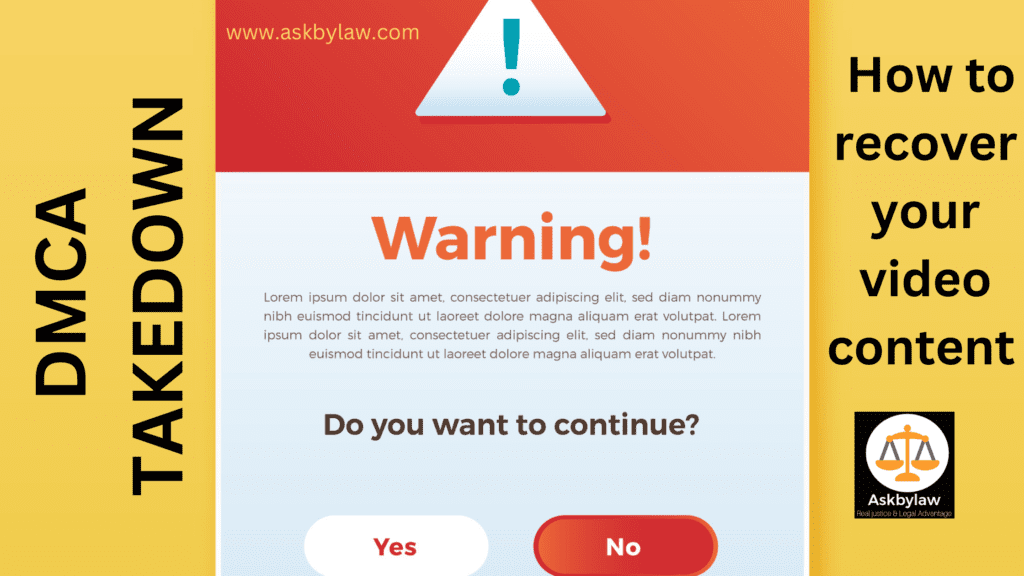
As an expert legal advisor with detailed knowledge of copyright and the ability to develop a fully legal-based YouTube content plan. I will definitely provide you with a structured outline to develop well described videos on "DMCA Takedown on YouTube" with legal protection.
This article will contain a legal framework of reliable information from high-level legal experience/expertise aimed at effectively educating readers and users.
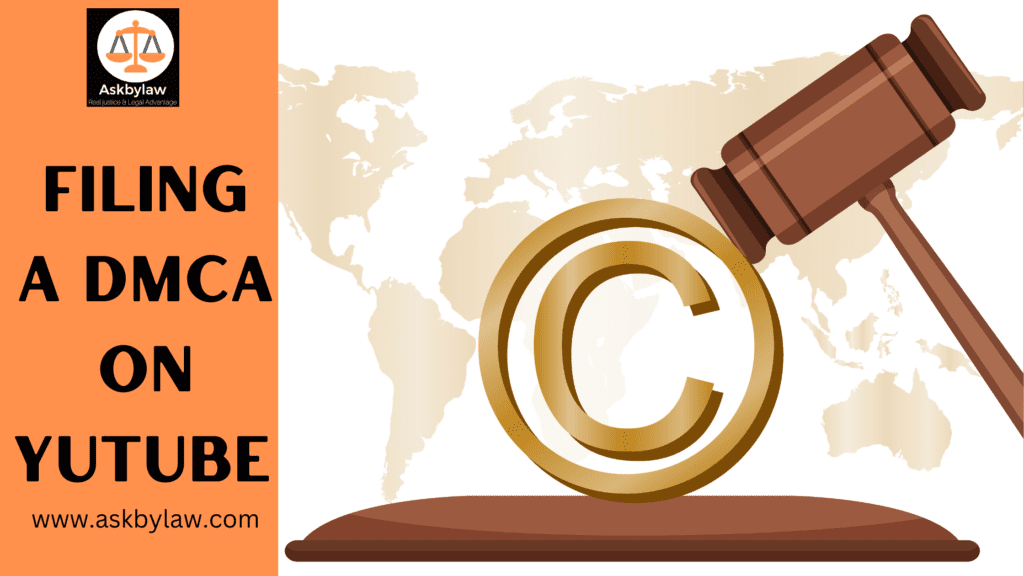
The Digital Millennium Copyright Act is a law of the United States of America. This Act is designed to implement the World Intellectual Property Organization's Copyright Treaty and Phonogram Treaties, which protect the production and dissemination of technology devices or services thereof.
This law is primarily designed to curb copyright infringement. This law is intended to protect the original copyright holder against injustice caused by unauthorized access to copyrighted works protected by law. An important issue in today's digital age is that the task of managing and protecting copyrighted content created by YouTubers themselves has become tedious and stressful.
The Digital Millennium Copyright Act addresses copyright concerns for creative YouTubers. The main purpose of the Digital Millennium Copyright Act is to prevent the unauthorized sharing and dissemination of creative YouTubers' creative content and rights on reputable platforms.
In 1998, the US Congress passed the Digital Millennium Copyright Act with the main and primary objectives of (1) establishing protections for online business or service providers in certain circumstances (2) providing incentives and protection to copyright owners against unauthorized access to their digital works in digital formats; (3) making it illegal to provide false copyright management information and/or to remove and/or alter such information under certain circumstances;
Section 512 of the DMCA, which deals with copyright, includes provisions regarding notices and counter-notices of copyright infringement.
When an owner voluntarily creates and displays digital works, without the permission of the original creative owner who created the work, a DMCA takedown is processed under the Digital Millennium Copyright Act for infringing the act of unauthorized access to the copyright and digital works created by the original owner.
Protection, which requires the creator of the original work that has been infringed upon, has to be invoked. A DMCA takedown is a legal means of early resolution of copyright infringement problems of online businesses or service providers.
The DMCA is a copyright infringement law of the United States of America. This law provides a remedy to the creator of copyrighted material to immediately remove copyright-infringing material from websites or other platforms without going to court.

The provisions of the DMCA provide necessary and essential protections to the original creator of copyright. This can be understood as follows.
Provide legal protection and security to owners or individuals to any person or company trade products or services through various online platforms such as a website or social media.
This provision is known as a self-harbor in the DMCA Act. This self-harbor provision protects against direct liability arising from copyright infringement and also encourages the development of user-generated digital content.
This system consists of an address system for immediate removal of all copyright-infringing content upon receipt of a DMCA notice based on the demand of a copyright holder providing an online business or service.
Protection against Fraud: This mechanism includes an effective management mechanism i.e. DRM (Digital Rights Management) to protect copyrighted content through the DMCA to prevent copyright infringement and prevent illegal use. And the main task is to prevent manufacturers from tampering with their content and preventing piracy.
The main purpose of the DMCA is to protect content creators' rights and freedom of expression. The provisions of the DMCA give importance to the intellectual property rights of creators and ensure that creators of content can do so online without any threat.
DMCA has created strict policies from YouTube in line with takedowns and has also implemented a system of Content IDs to address copyright issues. YouTube's policies prohibit the uploading of their copyrighted content by others without the permission of the original copyright owner. YouTube may track or block the copyright holder's content from being played further.
By developing the Content ID system, YouTube allows music labels and movie studio owners to upload content copyrighted by the original owners to its database, and then the Content ID system scans it. And YouTube often overlaps with other content. YouTube allows its original owner to advertise and monetize content.
Sometimes when a copyright holder notifies YouTube about copyrighted content uploaded by another user stating that the uploaded content falls under the definition of fair use.
YouTube will conduct a legal review of the notice they received, and this review proves that the uploaded copyrighted content does not fall under fair use. Any notice sent by the copyright holder will be treated as a false notice by YouTube and further processed. YouTube may also penalize the copyright holder for giving false notices.
Due to the penalty imposed by YouTube, the copyright holder who sent the false DMCA notice may be forced to appear in the court office, and reduceor lost the reputation of the person who gave the false notice may be seriously damaged and there may be circumstances of suffering financial loss. Statistical data for DMCA takedowns on YouTube
When YouTube receives a written notice regarding a DMCA from a copyright holder or their authorized legal representative, is YouTube sending that notice in compliance with the law? Reviews it. If the notice is found to be in compliance with DMCA rules, YouTube will immediately remove the infringing content in accordance with the provisions of the Digital Millennium Copyright Act and notify the user who uploaded the copyrighted content accordingly.
YouTube gives the option to provide a counter-notice to the user uploading the copyrighted content if the user of the revoked content is making fair use of the copyrighted content. If a user who makes fair use of copyrighted content gives a counter-notice to YouTube, the original copyright holder is notified by YouTube. If a user who makes fair use of copyrighted content does not provide a counter-notice to YouTube, YouTube will assume that the uploaded content is found to be infringing under the DMCA.
Following is the structure of this article based on the following citations for a detailed explanation of today's topic:
A fundamental principle of copyright law is the principle that the original copyright holder may grant limited or conditional permission to upload and monetize the content created by the original copyright holder for the user by obtaining the permission of the copyright holder to upload content created by him to his channel and paying royalties.
The fair use principle prohibits content creators from uploading their content to other users, commenting on it, criticizing it, producing news or reporting, publishing news or reports, educational and parody, or remixing the use of copyrighted content for other users with limited or conditional permission. Copyright given by creator, Fair use of copyrighted content is required under the DMCA to promote free speech, creativity, and sharing of ideas while using creator's copyrighted content.
Steps to avoid DMCA takedown action for other users to legally use the copyright holder's content include:

DMCA plays a crucial role in protecting and maintaining the safety of copyright creators' content and promoting content creation, and YouTube provides a legal framework to prevent abuse of content creator's rights and revenue streams.
Protecting and promoting copyright in today's digital age is an essential balancing act through the DMCA. DMCA is indispensable for a vibrant content ecosystem management.
In the digital world, it is imperative that every user be aware of the principles, policies, and laws of creators and consumers, and a clear understanding and vision of copyright rights and responsibilities of freedom of expression. One can contribute to the happiness and development of the virtual world.
Protect Your Creative Capital: Unleash the Power of DMCA Takedowns on YouTube! Safeguard Your Video Content and Take Control – Act Now for a Copyright-Secure Future! #DMCATakedowns #YouTubeProtection
If you are a copyright owner submit a valid DMCA (Digital Millennium Copyright Act) complaint through our web form, YouTube takes down that video and applies a copyright strike. If a user gets three copyright strikes in 90 YouTube days their account along with any associated channels, will be terminated by YouTube
If you are submitting a copyright removal request in error you can retract it. Retracting a copyright removal request will: Clear the copyright strike from the Uploader channel unless other content is contributing to the strike. Restore the Uploader content to YouTube, unless the Uploader deleted the said content.
As per our knowledge, DMCA takedown should be done by skilled, experienced and skilled and calm professionals. We have got the information that a website named www.DMCA.com is doing this kind of work. This website offers different packages for doing DMCA takedown.
#YouTubeDMCAprocessstep-by-stepguide #howtofightafalseDMCAtakedownonYouTube #legalexpertsforYouTubeDMCAdefense #YouTubeDMCAappealssuccesstips #legalsupportfor challengingDMCAtakedownsonYouTube
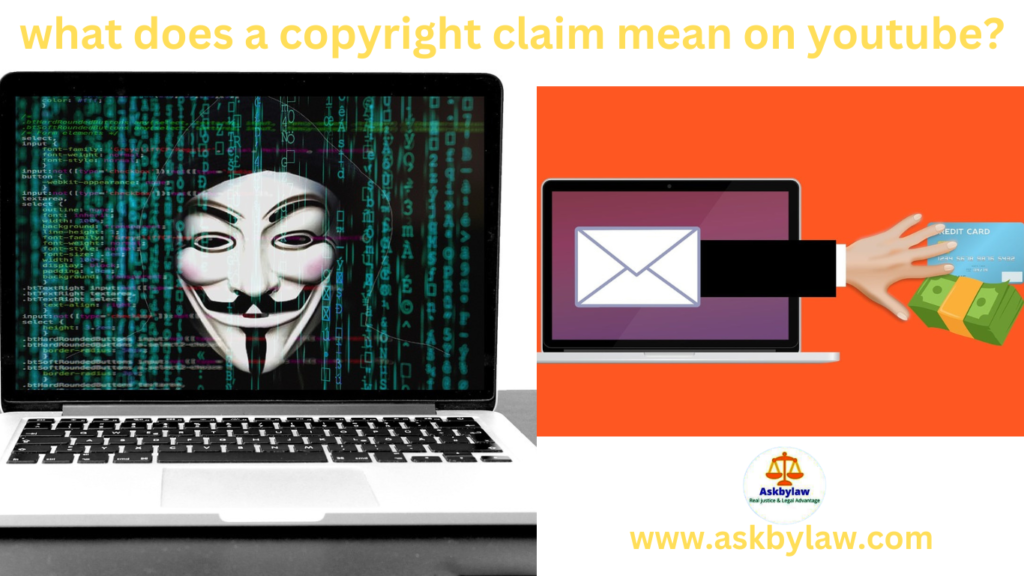
Have you uploaded some videoes to YouTube every day, only to find out that you have been sued by the copyright holder?
If, the said has happened to you, know that you are not alone. And claiming copyright claims are a common occurrence on YouTube, and they can be confusing for creators.
In today's blog, we discuss with you what is a copyright claim? How does it work? Also, What can you do if your video gets sued? We will provide information and explain it to you. We'll give you useful tips on "how to avoid copyright claims in the future"
Whether you're a new YouTuber or a Seasoned person. Read on to learn more about copyright claims on YouTube. Learn more about copyright claims on YouTube and protect your videos from copyright stress by reading our blog.
Subscribe to our blog for more tips on how to legally create and manage your YouTube channel well. Any copyright claim is a notice from YouTube that your video contains copyrighted material.
Any copyright claims may affect your ability to monetize your videos. There are two types of such copyright claims: Content ID claims and manual claims.
After the above discussion if you believe that your video does not infringe copyright. So there may be a copyright claim dispute for your channel. So you can take quick steps to avoid copyright claims on YouTube.
Did you aware that about 80% of YouTube video content that is protected by copyright? There are a lot of possible copyright claims there!
Learn how to comprehend copyright assertions on YouTube. We discuss with you. How to respond to them? And. How to prevent them in the future, in this blog post?
Understanding copyright assertions are crucial since they can have a significant impact on your YouTube channel. Continue reading to find out more about YouTube copyright issues and how to safeguard your channel. Also, take safety precautions for yourself.
I hope the said blog post is useful.
Whether are you a new YouTuber or a seasoned Professional? Read on to know more about copyright claim on YouTube.
Copyright claims are a common occurrence on YouTube, but how do they actually work? We'll look more closely at copyright allegations on YouTube in this section.
Including the role of YouTube's Content ID system, the process for filing a copyright claim. And the different types of copyright claim.
By understanding how copyright claims work, you'll be better equipped to protect your own content and deal with copyright claims filed against your videos.
A copyright claim can have a serious impact on your YouTube channel. Therefore, it's crucial to comprehend them and take precautions for your safety.
Continue reading to find out more about copyright disputes on YouTube and how to safeguard your channel.
YouTube's Content ID system is a tool that helps identify potential copyright violations. It works by scanning videos uploaded to YouTube to match copyrighted content that is registered with Content ID. If a match is found, the copyright holder can choose to claim the video. Which will give them exact control over how the video is used?
If you believe that your copyright has been violated on YouTube. You must file a copyright claim. The procedure for filing a copyright claim is relatively straightforward. You'll require to provide some basic information about the copyrighted material by you believe has been infringed, as well as the URL of the video you're claiming.
There are three main types of copyright claim on YouTube: first manual claim, second Content ID claim, and last third-party claim. Manual claims are filed by copyright holders who have not registered their content with Content ID. Content ID claims are filed by copyright holders who have registered their content with Content ID. A third-party claim is filed by companies that have been authorized by copyright holders to act on their behalf.
Copyright claims are common on YouTube. But, what are some of the most common scenarios that could lead to a copyright claim? The most frequent scenarios that can result in copyright claims are discussed in this section, including the unauthorised use of music, photographs, or video clips. We will also discuss the implications of fair use and transformative content on copyright claims.
By understanding the most common scenarios that can lead to copyright claims, you'll be better equipped to protect your own content and avoid copyright claims filed against your videos.
Copyright claims can seriously impact your YouTube channel, so it is important to understand the most common scenarios that can lead to copyright claims, and take steps to avoid them.
Fair use is a legal principle to permits limited use of copyrighted material without the permission of the copyright owner. Mutable material is material that has changed significantly from its original form, in some cases. Fair use and transforming content can protect you from copyright claims. However, it is important to consult with an attorney to determine whether your use of copyrighted material falls under fair use.
Read on to learn more about the most common scenarios that can lead to copyright claims on YouTube and how to avoid them.
• Some of the most common scenarios that can lead to copyright claims include:
• Using copyrighted music without permission or attribution.
• Using copyrighted images or video clips without permission or attribution.
• Sampling copyrighted music without permission or attribution.
• Creating a derivative work of copyrighted material without permission.
I hope this helps!
Copyright claims can have a significant impact on your YouTube channel. In this section, we'll discuss the consequences of receiving a copyright claim on YouTube, including potential consequences, such as video removal, copyright strikes, and channel fines. We will also highlight the importance of responding promptly and appropriately to copyright claims.
By understanding the impact of copyright claims, you will be better equipped to protect your own content and deal with copyright claims filed against your videos.
Copyright claims can have a serious impact on your YouTube channel, so it's important to understand the potential consequences and respond to copyright claims promptly and appropriately. Read on to learn more about the impact of copyright claims on YouTube and how to protect your channel.
If you receive a copyright claim on YouTube, there are several possible consequences. A copyright holder may choose:
Monetize your video and share revenue with the copyright holder.
If you receive a copyright claim, it's important to respond immediately. You can dispute the claim or accept it. If you dispute the copyright claim on YouTube, you will need to provide evidence to support your claim. If you accept the claim, your video will be affected as the copyright holder chooses.
If you receive three copyright strikes within a 90-day period, your channel will be terminated. This means that all your videos will be removed from YouTube and you will not be able to create a new channel.
In addition to copyright strikes, YouTube can also impose other penalties on your channel, such as:
Responding to copyright claims in a timely manner is important. If you do not respond to a copyright claim on YouTube within 30 days, the copyright holder may choose to remove your video or monetize your video without your permission.
• Reduced monetization opportunities.
• Restrictions on live streaming.
• Limitations on the ability to upload videos.
If you receive a copyright claim, it is important to respond promptly and appropriately. You should first review the claim to see if you believe it is valid. If you believe the claim is invalid on the basis of evidence, you can dispute the claim. If you believe the claim is valid, you can accept the claim or negotiate with the copyright holder. I hope this helps!
Copyright claims can have a significant impact on your YouTube channel. In this section, we'll discuss the consequences of receiving a copyright claim on YouTube, including potential consequences, such as video removal, copyright strikes, and channel fines. We will also highlight the importance of responding promptly and appropriately to copyright claims.
By understanding the impact of copyright claims, you will be better equipped to protect your own content and deal with copyright claims filed against your videos.
Copyright claims can have a serious impact on your YouTube channel, so it's important to understand the potential consequences and respond to copyright claims promptly and appropriately.
Read on to learn more about the impact of copyright claims on YouTube and how to protect your channel.
If you receive a copyright claim on YouTube, there are several possible consequences. A copyright holder may choose:
• Upload your video.
• Monetize your video and share revenue with the copyright holder.
• Block your video in certain countries.
If you receive a copyright claim, it's important to respond immediately. You can dispute the claim or accept it. If you dispute the claim, you will need to provide evidence to support your claim. If you accept the claim, your video will be affected as the copyright holder chooses.
If you receive three copyright strikes within a 90-day period, your channel will be terminated. This means that all your videos will be removed from YouTube and you will not be able to create a new channel.
In addition to copyright strikes, YouTube can also impose other penalties on your channel, such as:
If you receive a copyright claim, it is important to respond promptly and appropriately. You should first review the claim to see if you believe it is valid. If you believe the claim is invalid on the basis of evidence, you can dispute the claim. If you believe the claim is valid, you can accept the claim or negotiate with the copyright holder. Responding to copyright claims in a timely manner is important. If you do not respond to a copyright claim within 30 days, the copyright holder may choose to remove your video or monetize your video without your permission. I hope this helps!
GET IN TOUCH
Copyright claims can be a headache. But they don't have to be, we will walk you through the steps on how to respond to a copyright claim on YouTube. We will discuss available options, such as disputing the claim, seeking permission, or removing the disputed content. We will also explain the process of filing a counter-notice and its possible consequences.
By understanding the steps to resolve copyright claims, you will be able to protect your own content and combat copyright claims filed against your videos.
Copyright disputes can negatively affect your YouTube channel, so it's critical to know how to handle them and to respond quickly. Continue reading to find out more about resolving copyright disputes on YouTube and safeguarding your channel.
There are numerous actions you can take to settle a copyright claim you get on YouTube:
Remove disputed content. If you do not wish to dispute the claim or seek permission, you may remove the disputed content from your video. This will remove the copyright claim, but it will also remove the content from your video.
First, you need to review the claim to see if you believe it is valid. If you believe the claim is invalid, you can dispute the claim.
If you dispute the claim, you will require providing evidence to support your copyright claim on YouTube. You can do this by providing a link to the original source of the content or by explaining how your use of the content falls under fair use.
If you believe the claim is valid, you can obtain permission from the copyright holder to use their content. You can do this by contacting the copyright holder directly or by using YouTube's Content ID match tool. Enter a counter-notification. If you dispute a copyright claim and the copyright holder doesn't respond, you can file a counter-notice. This will allow you to restore your video and keep monetizing it.
If you issue a counter-notice, you will require providing specific information, including your contact information, the URL of the claimed video, and a statement that you believe the claim is invalid. You will also need to swear or affirm that the information you are providing is accurate.
If the copyright holder does not respond to your counter-notice within 10 business days, your video will be reinstated and you will be able to keep monetizing it. If the copyright holder responds, they can file a lawsuit against you. I hope this helps!
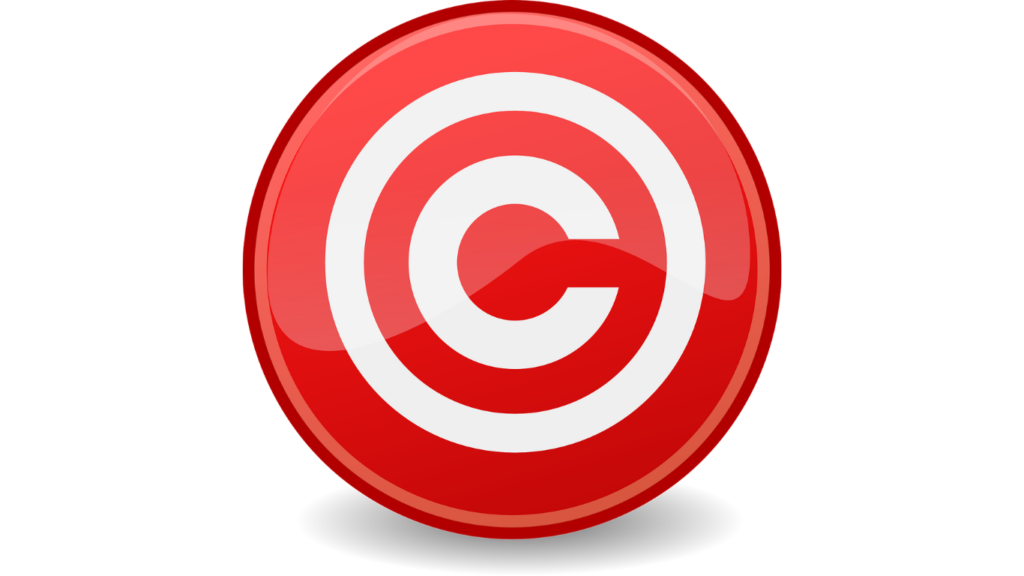
Your video's power to earn you money is gone.
First, you. Sign in to YouTube Studio. From the left menu than after selecting Copyright and Click New Removal request
Copyright protection applies to works created after January 1, 1978, and listen to you it is valid for the author's lifetime plus an extra 70 years.
Listening to you carefully, No. The only thing that will delete the claim is deleting the copyrighted content.
Hear to carefully. Deleting a video doesn't make the copyright claimant or copyright strike go away
In this blog post, we have discussed the basics of copyright claims are on YouTube. We've covered what copyright claims, how they work, and the potential consequences of receiving a copyright claim. We've also discussed steps you can take to resolve copyright claim on youtube.
We hope this blog post has been informative: If you, have any questions or doubt about copyright claims on YouTube, please feel free to comment below.
A copyright claim is a notification from YouTube that your video contains copyrighted material.
Copyright claims can have a significant impact on your YouTube channel.
There are three main types of copyright claims on YouTube: manual claims, Content ID claims, and third-party claims.
You can dispute a copyright claim, get permission from the copyright holder, or remove the disputed content from your video.
If you receive a copyright claim, it is important to respond promptly and appropriately
If you file a counter-notice, the copyright holder has 10 business days to respond. If they don't respond your video will be reinstated
In order to protect your content, it is important to be aware of copyright laws and policies. You may contact the YouTube Copyright Center and the U.S. You can do this by visiting the Copyright Office website. We encourage you to share your experiences with copyright claims on YouTube in the comments section below. We'd also love to hear your questions about copyright claims.
#Copyrightstrike #YouTube copyright #YouTubecopyright infringement #YouTube copyrightclaimprocess #YouTubecopyrightclaimappeal #YouTubecopyrightclaimconsequences #YouTubecopyrightclaimmonetization #avoidcopyrightclaimYouTube #PreventcopyrightclaimYouTube, #ProtectyourcontentonYouTube #CopyrightclaimvsCopyrightstrike #YouTubecopyrightclaim vs copyrightstrike #CheckcopyrightclaimYouTube
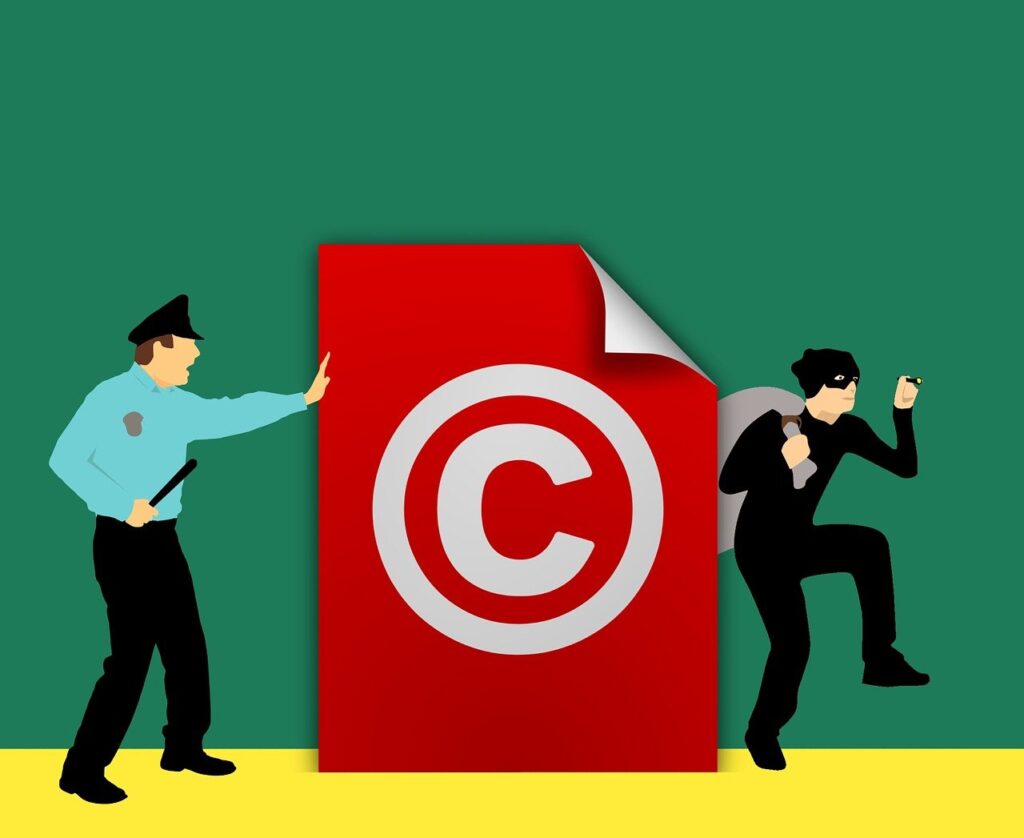
Any intellectual property is a valuable creation originating from the human mind. These creations can be artistic designs, designs, names, physical objects, and images.
Such physical assets are considered to be very indispensable and useful assets for every country or business. Also protecting intellectual property is a primary and useful concern for every creator of intellectual property.
We are here to discuss how to protect your intellectual property today in this article.
1. You need to know. What kind of intellectual property do you hold?
2. How should your intellectual property be well documented to ensure who owns it?
3. What tools are readily available in law for you to keep your intellectual property safe and secure? It is also very important.
4. When your intellectual property is damaged or your rights are violated for any reason?
With the help of today's article, you can make your intellectual property more secure and succeed in protecting the real value of intellectual property.
Eat to our comprehensive companion to guard your intellectual property! In the moment's presto- paced and technology-driven world, intellectual property (IP) has come an inestimable asset for businesses and individuals.
Whether you're an entrepreneur, innovator, artist, or creative professional, guarding your innovative ideas, inventions and cultural creations is essential to ensure that your hard work doesn't go unnoticed or exploited.
In this blog post, we will claw into the world of intellectual property and explore the significance of guarding it.
We'll bandy different forms of intellectual property, similar to patents, trademarks, imprints, and trade secrets, and punctuate the implicit pitfalls and challenges associated with each.
Understanding the value and significance of your intellectual property is just the morning. We'll guide you through practical ways, stylish practices, and proven strategies to effectively apply your IP rights.
From enforcing comprehensive security measures to navigating legal results, our end is to empower you with the knowledge and tools you need to cover your intellectual property means. But it does not stop there.
We know your intellectual property is not just about protection; It's also about maximizing its eventuality. That is why we'll also explore ways to work your IP, similar to licensing, hookups, and commercialization, to help you induce profit and unleash new openings.
Whether you're a seasoned professional or new to the world of intellectual property, this blog post is designed to be your go-to resource.
We have collected expert perceptivity, real-life exemplification, and practicable tips to help you navigate the complex geography of IP protection and take control of your intellectual means.
So, if you are ready to begin this trip to cover your intellectual property, cover your inventions, and harness the true value of your creativity.
Defining intellectual property and its colorful forms Intellectual property (IP) refers to impalpable creations of the mind that are defended by law.
It encompasses a wide range of creative and innovative means that individualities or businesses produce.
The main forms of intellectual property include Patents that cover new inventions and give exclusive rights to the innovator for a specified period. They give legal protection for the functionality and design of inventions, encourage invention, and help others from making, using, or dealing with patented inventions without authorization.
Trademarks are symbols, ensigns, names, expressions, or designs that distinguish and identify the source of goods or services.
They cover brand identity and help consumers separate between products or services in the request.
Trademark enrollment subventions exclusive rights and allows trademark possessors to help others from using analogous marks that may beget confusion among consumers.
Imprints cover original workshops of authorship, including erudite, cultural, musical, and dramatic workshops. They grant generators exclusive rights to reproduce, distribute, display, perform, and modify their workshop.
Brand protection arises automatically upon creation, furnishing legal protection against unauthorized copying or use of copyrighted material.
Trade Secrets Trade secrets are precious, nonpublic business information that provides a competitive advantage. It may include formulas, processes, client lists, software, or other personal knowledge.
Like patents, trademarks, and imprints, trade secrets are defended by nondisclosure agreements and other confidentiality measures rather than public enrollment.
Value and Importance of Intellectual Property mean Intellectual property means holding great value in moment's knowledge- grounded frugality.
It's the result of mortal creativity, invention, and investment of time, coffers, and trouble. Then are some crucial aspects pressing their significance and profitable value Intellectual property means can induce significant profit aqueducts through licensing, deals, or royalties.
They enable generators and businesses to monetize their inventions and creative workshop, drive profitable growth and encourage investment in exploration and development.
Competitive advantage IP means giving a competitive edge in the request. They separate products or services, enhance brand recognition, and establish a character for quality and invention. Intellectual property protection protects this advantage and helps businesses stay ahead in a competitive terrain.
Encourages Innovation, Intellectual property protection fosters a culture of invention by furnishing impulses for formulators, artists, and generators to partake in their ideas with confidence. It rewards and encourages the development of new technologies, and creative workshops’s and results in social challenges.
Despite the value and significance of the said intellectual property, it faces pitfalls and challenges, including violation of unauthorized use or violation of IP rights that may harm the exclusive rights of the creator or proprietor.
This can lead to financial loss, reputational damage, and loss of brand equity. It's critical to instantly identify and address cases of violations...
That imitating an original brand or invention poses a significant threat to intellectual property possessors. They can harm not only request share and profit but also consumer confidence and safety.
Guarding intellectual property becomes more complicated due to different legal systems and enforcement mechanisms. Businesses need to navigate transnational laws and establish effective strategies to cover their IP means worldwide.
It's essential for generators, experimenters, and businesses to understand intellectual property, its colorful forms, its value, and the pitfalls associated with the violation.
By understanding these introductory generalities, individualities, and associations can take an informed way to effectively cover and work their intellectual property means.
1. Music Industry Unauthorized sharing and downloading of copyrighted music has rebounded in significant profit loss for musicians and record markers. The arrival of digital platforms stressed the heightened need for brand protection and licensing models.
2. Technology Sector High-profile cases of patent violation, similar to those involving major Smartphone manufacturers, redounded in legal battles and significant fiscal agreements.
These cases emphasize the significance of guarding and guarding precious patents.
3. Fashion and luxury goods fake products imitating luxury brands not only beget profit loss but blemish the brand's character and adulterate its exclusivity.
This shows the negative impact of IP violations on fashion assiduity. These exemplifications serve as exemplary tales, showing the far-reaching consequences of shy IP protection.
They emphasize the significance of enforcing strong security measures to cover your creative means.
By proactively guarding your intellectual property, you can cover your inventions, maintain your request advantage and reduce the pitfalls of violation.
Real-life cases show the palpable impact of IP theft on businesses and individualities, buttressing the urgency and significance of IP protection in the moment's largely competitive and globalized business.
Trademarks, Imprints and Trade Secrets defended To effectively cover your intellectual property, call the following strategies special to each shape of IP Patents Work nearly with patent attorneys to guide through previous art quests and train complete patent operations. This ensures that your invention meets the conditions for patentability and receives the applicable legit.
Trademarks conduct a complete trademark hunt to insure your taken mark is accessible for enrollment. Once cleared, train a trademark operation with the applicable intellectual property department to secure exclusive birthrights to your brand name, totem or hallmark. Brand Carry the brand hallmark (©), your name, and the time of coinage on your initial workshop. While brand security arises automatically upon coinage, your brand is defended in the US. Registering with the Copyright Office provides fresh legit.
Trade Secrets utensil strong screen measures to cover your trade secrets, similar confining access to nonpublic information on a want-to-know base, enforcing confidentiality agreements with workers and mates, and maintaining secure IT systems to help unauthorized access.
Best Practices for maintaining sequestration and Precluding Unauthorized Access It’s important to keep your intellectual property nonpublic to help unauthorized use or exposure. Call the following stylish practices.
Exercise an NDA when participating in nonpublic information with workers, contractors, mates, or implicit investors. These agreements establish legit scores to conserve confidentiality and circumscribe the use of sensitive information.
Establish clear programs descrying the running of sensitive information, involving the use of particular bias, secure train storehouse, and secure message channels.
Physical and Digital Security Measures apply physical screen measures, similar to defined access to nonpublic areas and secure storehouses for physical documents.
Exercise encryption, firewalls, secure networks, and strong word programs to cover digital means. Regular inspection and monitoring conduct regular checkups of your IP means and internal processes to identify susceptibility and ensure compliance with screen protocols. Examiner responsible for any suspicious exertion or unauthorize access to sensitive information.
Empowering agreements and non-disclosure agreements play an important part in guarding your intellectual property birthrights Contracts exercise well-drafted contracts when engaging in collaboration, cooperation, or outsourcing arrangements. Easily outline power birthrights, circumscriptions and suffered usages to cover your IP means.
#IPprotection #secureyourideas #Creativerights #Innovationinspiration
Still, call a licensing arrangement, if you want to monetize your IP. Craft a licensing consensus that outlines the tours and conditions for the empowered use of your IP while maintaining control over its quality and veracity.
Non-Disclosure Agreements( NDAs) When telling nonpublic information to third parties, similar to implicit investors or business mates, exercise an NDA to establish legit walls and help unauthorized exposure or use of your personal information.
By enforcing these strategies and stylish practices, you can significantly enhance the security of your intellectual property means.
Whether it's patents, trademarks, imprints, or trade secrets, maintaining confidentiality, or using contracts and agreements, guarding your precious creations requires a complete path to the IP screen.
Overview of legal avenues for IP protection and enforcement When it comes to intellectual property (IP) protection and enforcement, there are several legal avenues available.
Registering your IP similar to patents, trademarks, and imprints with the applicable intellectual property services provides legal recognition and protection. It establishes a public record of power and strengthens your rights in case of violation.
Action still, you can take legal action through civil action, if your IP rights are violated. This includes filing suit, presenting substantiation of violation, and seeking remedies similar to injunctions, damages, or royalties.
An ADR mechanism similar to an agreement or arbitration gives non-legal options for resolving IP controversies. These processes involve neutral third parties who help the parties reach a mutually agreeable agreement.
International Security For global IP protection, transnational covenants, and conventions similar to the World Intellectual Property Organization (WIPO) give mechanisms for guarding and administering IP rights across multiple authorities.
Patent, Trademark, and Copyright Filing Procedures, Forms for patents, trademarks, and imprints include specific procedures and conditions
To file a patent, conduct a previous art hunt, prepare a detailed patent operation, describing the novelty and mileage of your invention, and train it to the applicable patent office. The operation undergoes examination, and if approved, a patent is granted, which provides exclusive rights for a specified period.
The process of registering a trademark involves conducting a comprehensive hunt to insure its vacuity, preparing a trademark operation with required information and templates, and submitting it to the applicable trademark office. Examination and blessing lead to trademark enrollment and protection.
Brand protection arises automatically upon the creation of an original work. Still, to gain fresh legal benefits, similar to the capability to take legal action, you may freely transfer your brand to the US. You can be registered at the Copyright Office.
The enrollment process generally involves submitting an operation, a dupe of the work, and the applicable figure. Importance of consulting intellectual property Attorneys and expert’s consultation with intellectual property attorneys and experts is important for the effective IP operation and legal guidance Litigation and Knowledge Intellectual property attorneys specialize in IP laws and regulations.
They've the Litigation to navigate the complications of the enrollment process, understand legal conditions, and advise on the stylish strategies to cover and apply your IP rights.
An attorney can assess the implicit pitfalls to your IP and develop a comprehensive legal strategy acclimatized to your specific requirements.
They can help identify implicit violations, draft contracts, and agreements, and guide you through enforcement conduct if necessary.
Intellectual property attorneys can help maximize the value of your IP means. They can give guidance on licensing, accommodations and IP portfolio operation to help you make informed opinions aligned with your business pretensions.
Navigating the intellectual property legal geography requires a deep understanding of the legal avenues available, the formation processes for patents, trademarks, and imprints, and the guidance of educated IP attorneys and experts.
By using our knowledge and Litigation, you can effectively cover, apply and maximize the value of your intellectual property means.
Examining the success stories of individuals and businesses can provide valuable insights into effective IP protection and monetization. Here are some inspiring examples:
XYZ Pharmaceuticals has developed a groundbreaking drug to treat a rare disease. They obtained a patent for their innovative design, preventing competitors from copying their products.
Through strategic licensing agreements with global pharmaceutical companies, XYZ Pharmaceuticals has successfully commercialized its IP, generating significant revenue by ensuring broad patient access to its life-changing treatments.
ABC Tech Innovations created a revolutionary software solution that revolutionized the cybersecurity industry. They obtained multiple patents to protect their unique algorithms and data encryption methods. By enforcing its IP rights through litigation against infringing competitors, ABC Tech Innovations maintained its preserved market dominance and successfully negotiated licensing deals with industry leaders, resulting in significant financial gains.
Art Studio, a small design company, copyrights their original artwork and designs. They strategically expanded their brand presence through online platforms and social media, showcasing their unique creations. Their efforts gained significant traction, leading to collaborations with renowned fashion brands, licensing agreements, and a dedicated global customer base. Artistic Studio's ability to protect its IP and leverage it for commercial success transformed its business into a recognized and profitable brand.
These success stories highlight key strategies and lessons for effective IP protection and commercialization:
Obtaining patents, trademarks, and copyrights early provides a solid foundation for protecting your IP assets. This prevents others from infringing on your creations and increases your bargaining power in licensing negotiations.
Collaborating with industry leaders through licensing agreements can provide access to broader markets, distribution networks, and resources. It enables you to monetize your IP while leveraging the expertise and resources of established players.
Monitoring the market for potential IP infringements and taking swift legal action when necessary is crucial. Enforcement actions deter violators, protect your rights and maintain your competitive advantage.
Establishing a strong brand presence and effective marketing of your IP assets can attract customers, investors, and potential collaborators. Use online platforms, social media, and targeted marketing campaigns to showcase the uniqueness and value of your IP.
Continuous innovation is required for continued success in IP protection and commercialization. Stay at the forefront of your industry by continuously developing new products, services, or technologies that build on your existing IP portfolio.
By studying these success stories and incorporating the strategies and lessons learned, you can more effectively navigate the IP protection and commercialization landscape.
Each story serves as an inspiration and a reminder that with the right strategy and a strong commitment to protecting and monetizing your intellectual property, you can achieve significant success.
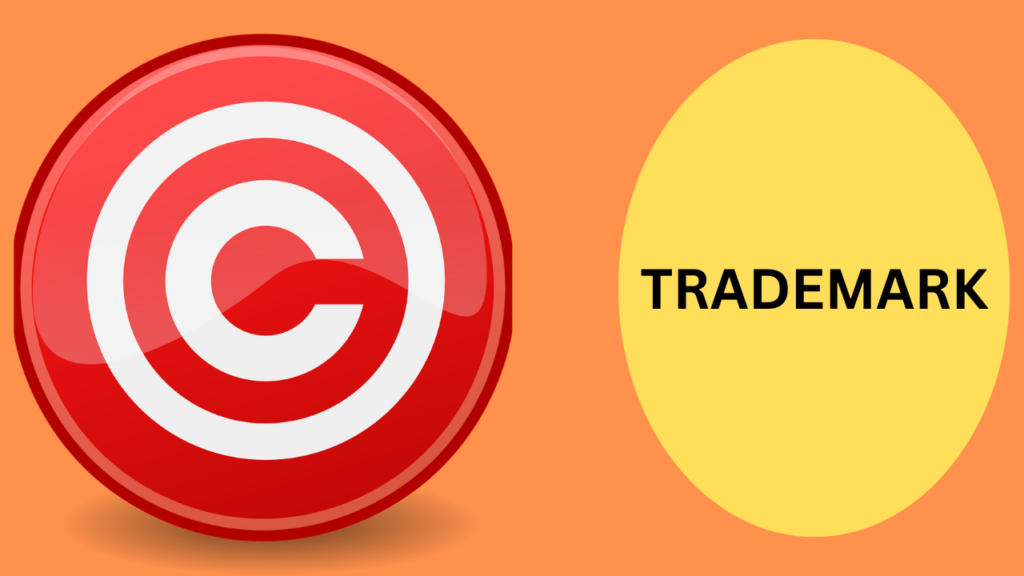
GET IN TOUCH
To increase the value of your intellectual property assets, consider exploring the following best ways:
Licensing allows you to allow third parties to use your IP in exchange for royalties or fees. This strategy enables you to generate revenue without being directly involved in manufacturing or distribution. Identify potential licensees who can effectively commercialize your IP in markets or industries beyond your reach.
Strategic collaborations and partnerships can unlock new opportunities for your IP. Joining forces with complementary businesses or industry leaders can expand your IP's reach and market penetration. Find partners who can add value to your IP through joint marketing efforts, access to distribution networks, or complementary product/service offerings.
Consider commercializing your IP directly by developing products or services based on your innovations. This approach gives you more control over the market presence and monetization of your IP. Develop a strong business strategy, conduct market research, and leverage your unique IP advantages to create a competitive advantage.
How to protect your intellectual property. Strategic collaborations and joint ventures offer numerous benefits for expanding the reach of your IP:
Collaborating with established companies provides access to their resources, including expertise, distribution channels, manufacturing capabilities, or research and development facilities. This accelerates the market entry of your IP and increases its commercial potential.
Partnering with companies with a strong presence in target markets or complementary customer bases can significantly expand the reach of your IP. Leveraging their existing network and customer relationships can increase sales, brand exposure, and market share.
Joint ventures allow you to share the risks and costs associated with IP development, production, marketing, and distribution. You can reduce the financial burden on your business while increasing the chances of success.
How to protect your intellectual property. When engaging in IP-related contracts, consider the following tips to maximize returns:
Clearly define the scope of the agreement, including rights granted, territories covered, duration, and financial terms. Clearly outlining these terms reduces the risk of disputes and ensures that both parties are aligned.
Implement safeguards to protect the privacy and integrity of your IP. Use Non-Disclosure Agreements (NDAs) to prevent unauthorized disclosure or use of your confidential information. Consider provisions, including IP ownership, infringement remedies, and dispute resolution mechanisms.
Consultation with experienced intellectual property attorneys is important in the negotiation and drafting of IP agreements. They can help you understand the legal implications, negotiate favorable terms, and ensure that your rights and interests are protected.
By taking advantage of licensing, partnership and commercialization opportunities, you can maximize the value of your intellectual property. Strategic collaborations and joint ventures offer access to resources, market expansion, and shared risks and costs.
When negotiating IP-related contracts, seek our legal advice to establish clear terms, protect your IP and optimize compensation. And by implementing these strategies, you can unlock the full potential of your intellectual property and gain significant value for your business.
(1) Patent (2) Copyright (3) Trademark and (4) Non-Disclosure Agreement
(1) Design rights (2) Copyrights (3) Patent rights (4) Trademark rights
1. Register and fulfill your IP under Trademark, Copyright, and Patent compliances.
2. Keep your Intellectual Property records under your control.
3. Take immediate action against violators of your intellectual property.
4. Do not implement the innovation of partnership or joint property as far as possible
5. Provide your staff with specialized training on safeguarding and being aware of your intellectual property.
6. Ensure and verify that development in ownership can be done even after registration in your intellectual property.
7. Prepare and implement a property utilization strategy with the help of an expert intellectual property lawyer
8. Immediately Implement a Non-disclosure agreement
9. Monitor who is preventing you from enjoying your intellectual property rights
10. Keep your idea or innovation a secret until your property is registered
The said blog post discussed the importance of protecting intellectual property. Including legal points like patents, trademarks, copyrights, trade secrets etc.
It highlighted the need for proactive protection to protect innovations and creative works and identified effective strategies for protecting IP.
It also discussed the legal avenues available for IP protection and enforcement, and the importance of consulting with intellectual property lawyers. The most important details are that protecting and maximizing intellectual property is essential for long-term success and competitiveness and that proactive step should be taken to protect innovations and creative works.
These steps include understanding the different forms of IP relevant to your business, implementing strategies to maintain confidentiality, and liaising with intellectual property lawyers and experts.
About the Author: Viren Dave is the founder and partner of a law firm called Advocate Askbylaw. He specializes in enhancing engagement and user peace of mind by helping troubleshoot user legal queries. And, starting his career as a lawyer, he supports solving many legal issues in civil, criminal, property, consumer, family, and corporate law. You can find him on his blog or under mentioned social links:
1. Cyber law cases-Best 1ways to protect your cyber life
2. What You 100% Best Need to Know About This Growing Crime
3. ways Legal and Moral Liabilities of the healthcare workers
This article discusses the importance of Travel dispute resolution and how it can benefit travelers. It identifies common types of Travel dispute resolution and how they can escalate into legal issues. A travel law attorney can help travelers understand their legal rights and navigate the complex legal system. Any alternative dispute resolution (remedial) methods, such as mediation or arbitration, may be faster and less expensive than going to court, but are not as fruitful as the court remedy considering its limitations. By understanding their legal rights and seeking legal assistance, travelers can protect themselves from potential legal disputes and ensure a better travel experience.
Have you ever experienced the frustration of delayed flights, lost luggage, or overbooking hotel rooms while traveling? Unfortunately, travel disputes are becoming a common occurrence in the travel world. Which can often quickly lead to legal problems? That's it's important to understand your legal rights as a traveler and know how to effectively resolve disputes.
In this article, we will definitely explore the world of travel dispute resolution with you. As well as we will provide you with valuable information to help you navigate this complex issue of the area of the traveling industry. Here we'll identify common types of travel disputes, and then explain why they can turn into legal problems. Then after, we'll provide you with practical tips on how to resolve disputes with your own techniques. For example, dealing with customer service or filing a complaint with a travel provider?
Sometimes these initial steps do not lead to a satisfactory resolution. And in this situation, that is where a travel law attorney comes in. Here, we will definitely explain the role of a travel law attorney, and how they can help you protect your rights as a traveler. In this article, we will provide examples of how to travel law attorneys have helped clients in the past. And also we will explain the different types of legal assistance available to travelers.
Whether you're a frequent traveler or just starting to plan your next trip? It is important that you understand travel dispute resolution. By knowing your legal rights from us and understanding the various options available to Travel dispute resolution, you can navigate the travel industry with greater confidence. And enjoy a smooth and stress-free travel experience.

Let me show, you that common types of disputes that arise during travel include:
Your airline company cancels or delays the flight. In such a situation passengers may experience inconvenience and financial loss due to missed connections, rescheduling, and other related expenses.
Sometimes passengers expect their luggage to arrive with them at their destination. Unfortunately, sometimes goods can be lost, delayed, or even damaged during transit. This may cause financial loss to the passenger and great inconvenience to the passengers.
Unfortunately, some hotels overbook the rooms. This decision leads to a situation where guests with confirmed reservations are left without accommodation. Such times can result in frustration and additional costs for affected guests.
If the tour operator or a company cancels your tour without any reasonable reason. In such a situation, travelers may face present loss of non-refundable expenses like pre-booked flights and accommodation.
The car rental company charges for damages or other fees on the trip. Such behavior can lead to disputes. Facts that, were not disclosed or disputed at the time of levying the rent.
Any travel providers may fail to communicate clearly with their customers. Because of this, dealing with passengers leads to misunderstandings and unfulfilled expectations.
While all contracts between travel providers and their customers can be a complex situation. Disputes may arise in situations where the terms and conditions are not clearly defined, or when they are not followed.
Unfortunately, consumers have legal rights when it comes to providing amenities during travel. But sometimes disputes can arise when travel providers fail to comply with these laws
Sometimes disputes over accidental damage to a traveler can turn into legal issues. Also, consumers suffer significant financial losses as a result of such damaging disputes. Also, passengers feel that legal action is necessary to recover their losses.
Consumers are discouraged from any travel provider and are encouraged to negotiate with the travel provider before going to court, under the guise of seeking assistance from consumer protection agencies or industry associations, or without using alternative dispute resolution mechanisms in favor of the traveler, such as mediation or arbitration. Attempts to solve clerical problems are passenger rights, not rights. Therefore, during travel, the passenger has only legal recourse as a last resort to resolve travel disputes.
Give examples of common travel disputes, such as flight cancellations, lost luggage, or hotel overbooking:
When a passenger's flight may be canceled or delayed without any reasonable cause. The main reasons may be bad weather, mechanical problems or lack of crew, or other reasons.
Any hotel can overbook their rooms. In such cases some guests may be transferred to another hotel or rooms may not be available upon arrival.
Often the tour operator may cancel the tour for reasonable reasons due to unforeseen circumstances. In such a situation travelers are left with non-refundable expenses like flight and accommodation which can be said to be against the traveler's rules.
Generally speaking, a traveler can dispute charges for damages or other fees that were not disclosed or that they believe were unfairly assessed by the car rental company.
Travelers can make claims with a travel insurance provider for expenses incurred due to a covered event (situation) such as a medical emergency or trip cancellation.
Any traveler may refuse entry into the country due to problems with their international visa or passport. In such a situation the travel plans are canceled and the traveler suffers a financial loss.
The aforementioned disputes can be stressful and frustrating for travelers. It can also result in financial losses and missed opportunities and disruptions in travel plans. And it's important for travelers to know their rights and responsibilities and communicate effectively with travel providers. That is why they try to resolve problems before they escalate into legal disputes.

Disputes arising during travel can be frustrating and stressful. In such a situation travelers can take steps to resolve it effectively. Look, here are some options available to resolve any Travel dispute resolution:
Generally, the first step in resolving a Travel dispute resolution is to speak with customer service. And explain the problem you are experiencing to the customer service department. And see if they can give you a solution? Be sure you to keep all records of your conversation with the customer care, And, including the name of the customer service representative you spoke with and the date and time of your call.
The next step is to file a complaint against the travel provider when talking about your concerns with customer service does not resolve the issue. Which may be the grievance Redressal department of the airline, hotel or other travel company. And firstly, check their website or contact their customer service to know how to file a complaint with them. And any relevant details. Make sure this includes your booking confirmation number, dates of travel and a description of the problem.
Developing countries have travel ombudsmen for Travel dispute resolution. This ombudsman can help resolve disputes between travelers and travel providers. Also check your country's government website to see if there is a travel ombudsman. And if so you can contact them.
Any mediation or arbitration may be a quicker and less expensive alternative to going to court. But if in mediation, the third party will not help you and the tour provider to find a mutually acceptable solution without using discrimination, prejudice and merit, the last option for Travel dispute resolution remains to knock on the door of the court.
If your complaint cannot be resolved by Customer Service or the Travel Ombudsman, you may need to seek legal assistance. Because a travel law attorney can help you understand your legal rights and navigate the legal system. And they can also represent you in court and negotiate a settlement with the travel provider regarding Travel dispute resolution.
The most important details are that a travel ombudsman can use to help resolve disputes between travelers and travel providers for Travel dispute resolution. And, mediation or arbitration can be a faster and less expensive alternative to court, a travel law attorney can help understand legal rights and navigate the legal system. And a consumer protection agency can investigate your complaints. And consumer protection agency takes legal action against travel businesses that violate consumer protection laws.
Please must be checks with your local consumer law protection agency, to see if they can help you.

A skilled travel law attorney specializes in legal issues that arise from Travel dispute resolution. These mainly include issues related to air travel, cruise ship travel and accommodation. A travel law attorney can provide legal guidance and representation to travelers who are experiencing difficulties with their travel providers or who have suffered injuries while traveling.
A specialist travel law attorney can advise travelers about their legal rights and responsibilities regarding their travel arrangements. And they can help travelers understand their rights under consumer protection laws, contract law and other related legal frameworks
If a Travel dispute resolution cannot be resolved by you through negotiation or alternative dispute resolution. In such cases, travel law attorneys can represent clients in court. And travel law attorneys can file lawsuits on behalf of clients and present their case in court to seek compensation for damages
Travel disputes can also be resolved through negotiation. For that, a travel law attorney can represent clients in negotiations with travel providers. And can help you reach a settlement that is fair and just.
Often a travel law attorney can protect the rights of consumers by ensuring that travel providers comply with applicable laws and regulations. And travel law attorneys can investigate complaints of illegal or unethical practices by travel providers. And travel law attorneys can take legal action to protect their client's interests regarding Travel dispute resolution.
Specialist travel law attorneys have helped clients obtain compensation for injuries sustained while traveling, for example, slip and fall accidents on cruise ships or injuries sustained in airplane crashes regarding Travel dispute resolution.
If a Travel dispute resolution cannot be resolved by you through negotiation or alternative dispute resolution. In such cases, travel law attorneys can represent clients in court. And travel law attorneys can file lawsuits on behalf of clients and present their case in court to seek compensation for damages
Expert travel law attorneys have successfully resolved disputes between clients and travel providers. For example, disputes over canceled flights, lost luggage and overbooked accommodation and others.
If a Travel dispute resolution cannot be resolved by you through negotiation or alternative dispute resolution. In such cases, travel law attorneys can represent clients in court. And travel law attorneys can file lawsuits on behalf of clients and present their case in court to seek compensation for damages.
Travel law attorneys protect the rights of consumers by taking legal action against travel providers who engage in illegal or unethical practices, such as false advertising or discrimination, for violations of protected consumer rights during travel.
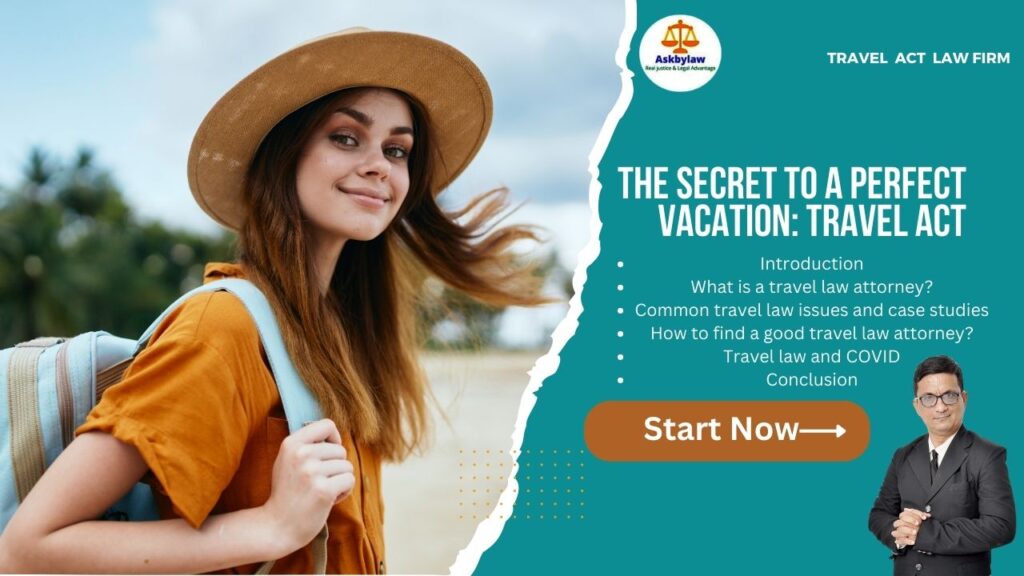
The Many Travel dispute resolution is an important process for travelers to protect their rights and resolve conflicts with travel providers.
When you are decided to face a travel dispute, travelers should first try to resolve the issue directly with the travel provider through the customer care service center or a formal complaint.
As per our eye of law In some cases, however, legal action may be necessary to resolve a travel dispute.
Travel law attorneys can help travelers navigate the legal system and protect their rights.
Seeking legal advice may be required and necessary in many cases in the eye of the law, and travelers should not hesitate to reach out to a travel law attorney for assistance.
“Traveling- it leaves you speechless, then turns you into a storyteller”- Ibn Battuta
What a great traveler. Are you planning your next travel adventure? don't miss out on reading about travel law and a travel law attorney.
Today's article is written for detailed guidance on traveling law and the role of an Attorney. What is the Travel Act? Why should travel law be considered important? This article is designed to clarify the concept of that matter and who is a travel act attorney. And, why might readers need them? This article has been prepared to clarify the inclusion of this matter.
Both travel law and travel law attorney requirements are confirmed in this article. Protecting the worries, interests, and rights of travelers requires a travel law attorney. A traveler can enjoy a safe and loss-free journey by taking the help of a travel law attorney.
In the world. Traveling from one corner of the world to another can exciting, but no matter how carefully you plan, it can bumpy and challenging. With the help of a travel law attorney such situations can be positively changed the experience. Read more…
Are you an enthusiastic and avid traveler? Are you loving the experience of exploring new places and different cultures? Did you know that a lack of travel legal awareness can hamper your trip by creating unexpected hurdles in your journey? In such a situation the help of a travel law lawyer can be useful in sustaining your adventurous and enjoyable trip.
In the aftermath of the Covid-19 pandemic. There is an urgent need for discussion and advice on travel and travel-related laws. It is essential and imperative to understand the good nursing aspects of Covid-19 to understand what the rights of travelers are and how they can be protected by travel laws and the travel laws that affect the millions of travelers traveling around the world.
In today's article, we will discuss with you in-depth the usefulness and importance of a travel law lawyer by navigating the world of travel law and some legal issues related to travel. Whether you are planning a vacation? And a Business trip, or long-term trip abroad? Understanding the travel laws is imperative to protect your travel concerns and rights and ensure a pleasant travel experience.
Travel law covers legal issues like cancellation, cancellation, delay or lost or damaged goods, personal injuries or travel scams etc. It is imperative to have an expert and experienced travel law attorney to provide legal assistance regarding the above issues and ensure that the rights and concerns of travelers are ensured. How can a travel law lawyer help you? The answer is that travel law can help you by guiding you through the problems and getting you out of the tangle of travel law. Read more…
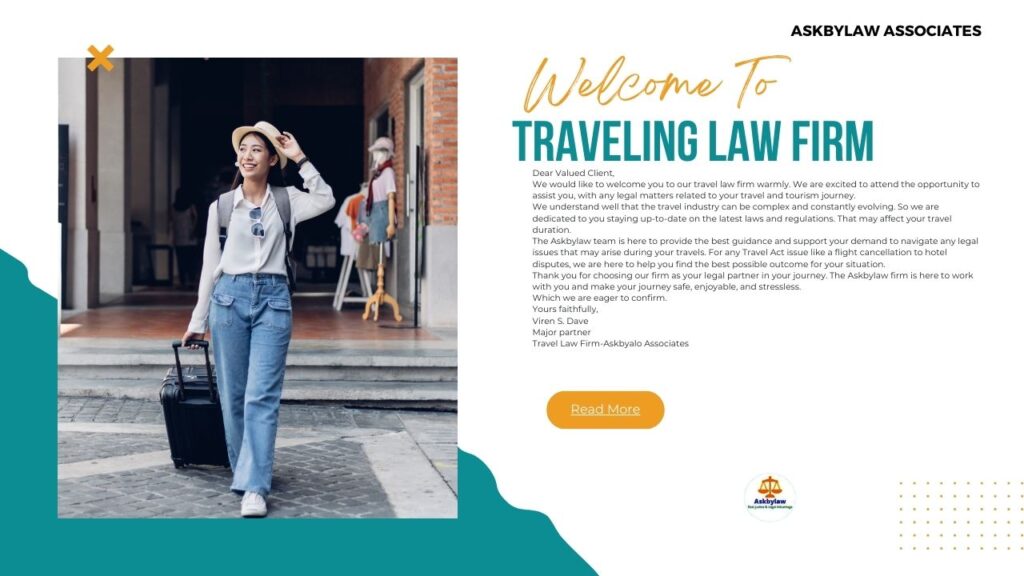
A travel law attorney is a professional person who is an experienced and expert person in travel law. Travel law attorneys work closely with the tourism industry to provide business advice and legal representation and guidance on how to handle legal issues that arise during travel... The main advantage of a travel law attorney is that they are knowledgeable and experienced and skilled in the laws related to the travel industry.
Travel law practitioner involves in LEGAL PROBLEMS RELATING TO TRAVEL SUCH AS FLIGHT CANCELLATION, DELAY, LOSS DURING THE SAME TRAVEL, DAMAGE TO LUGGAGE EXPERIENCE DURING TRAVEL, ACCIDENT OR INJURY DURING TRAVEL, long-term ILLNESS DUE TO FOOD POISONING OR OTHER SUBSTANCES DURING TRAVEL Events like becoming, etc. Are included... Travel law attorneys may also serve in travel companies or various organizations in the travel industry. As advised the company/organization regarding comply with policies and regulations related to travel laws. And can also represent the company legally in disputes between the customers and the company.

Travel is enjoyed only when it is completed without violating any of the passenger's legal rights. Unfortunately. We were shocked, but it's natural to feel anxious and stressed when you lose your luggage during a trip. A travel law attorney is someone who faithfully protects a traveler's legal rights.
If the travel company cancels or delays the tour as agreed with the customer without any reasonable reason, it faces a financial loss. Passengers are entitled to compensation or refunds for damage to their travel.
Be it airlines or cruise ships, it is the duty of the company or organization to keep passengers in good condition during the same transit. If the company or organization fails to fulfill its legal duty, it becomes liable to compensate the customer for financial loss.
The travel company becomes legally liable for serious injury or death of a customer during the tour without any reasonable cause or due to human negligence. And they are liable to pay compensation as prescribed by law to such aggrieved customers.
When the property is rented out to a customer in disregard of the legal conditions of vacation rental and the customer receives substandard service during the trip, the right of the customer can be said to be violated. In such situations, travel law attorneys are skilled and experienced in resolving such disputes and protecting rights.
A flight was canceled due to a technical fault for some reason, which was canceled by the airline company without informing the customer and without giving any other option. As a result of which the airline company refused to provide them with accommodation or layover facility or a new flight to the customer. Such a customer is entitled to recover from the tour company the amount of inconvenience and expenses and loss suffered by him.
A customer suffered serious electrical injuries due to faulty air conditioning in a hotel and the hotel management refused to accept responsibility for the incident and denied compensation for the customer's injuries and expenses and wages. Rights protected
Below are questions to ask a travel law attorney.
1. What and how much experience do you have in travel law?
2. How many cases have you handled before?
3. How has your success been in such cases?
4. How will you protect my matter during the entire process?
5. What are your fees and billing methods?
Due to the epidemic of covid-19, the tourism sector has had to experience a huge negative impact. Due to this, legal problems have arisen worldwide. I am going to discuss with you some cases that will give you an idea of the impact of Covid-19.
The covid-19 pandemic has resulted in the cancellation of inter-state and cross-country flight services, which has forced most travelers to struggle and endure delays in getting compensation for their travel cancellations. And some passengers were forced to stay where they were.
Every traveler has to spend this period with health and safety concerns and stress as the pandemic forces travelers to come in contact with other people while traveling. And no man in the world is ignorant of the news of forced travelers being quarantined because of this epidemic.
In a pandemic like Covid-19, travel law attorneys can seek refunds or compensation from travelers under the booking conditions. Also can provide legal guidance. As such can negotiate with travel companies on behalf of the traveler. To explain to the travel company the legal rights of the traveler and his options and to negotiate in the interest of the traveler. Also, if required, it may include things like filing petitions/cases in court in the interest of the tourist and representing the tourist therein. Moreover, the traveler can get access to the society of changes in travel restrictions and regulations. Travelers in particular can have the peace of mind that their legal rights are being protected by a skilled and expert traveler law attorney.

Travel law is considered a single part of the law. Travel law covers travel cancellation, delay, lost baggage, travel-related scams, and other travel-related disputes. A travel law attorney is knowledgeable and experienced in this matter and can therefore provide valuable advice and guidance to travelers facing legal issues.
This article focuses on the importance and utility of an experienced and knowledgeable and qualified travel law attorney to understand travel laws. And provide detailed guidance on how to resolve legal issues in travel law and how to exercise your right to a comfortable and enjoyable travel experience as a traveler? The options are designed to be known.
It is essential to have a travel law attorney with you to resolve legal issues in travel law. Retaining a travel law attorney can help you protect your legal rights and interests regarding travel. And you can rest assured that you also get compensation for damages caused by a hacker or violation of your travel interest. And you can make your travel memorable by keeping your travel worries at bay.
M&A contract negotiation transactions become rigid and multilateral as they involve law and various stakeholders as parties. That is why M&A practices require special focus and concentration. Contract negotiations are a useful part of the M&A process. In order to successfully negotiate a contract in the M&A Contract Negotiation process, the executive has to use his interest, confidence-building skills, communication, contract negotiation techniques and enthusiasm.
In order, to successfully negotiate contracts in the M&A process, acquisition executives have to find M&A pain points and find possible solutions to them. For which the M&A acquisition executive must study with the knowledge of the potential costs, how much passion is available in the market, what is the new technology, and how to take steps in the dynamic market. M&A acquisition executives need to have a clear and specific outline of how the deal fits together with the company's long-term goals and how they will focus on future growth and development.
An M&A acquisition executive must act in a manner that protects the deal by identifying the pain points of the deal, proposing solutions, presenting the benefits, understanding the dynamics and direction of the business, communicating effectively, using leadership skills, and engaging all stakeholders involved in the acquisition deal to make the negotiation successful. So that success can be achieved by aligning the needs and goals of all parties.
Due to the involvement of law in the merger and acquisition process, businessmen find such transactions cumbersome and multi-party transactions. Since M&A transactions involve more than two stakeholders, reducing contractual stakes in the entire merger and acquisition process is key. Are you tired of negotiating merger and acquisition agreements? Are you feeling frustrated and frustrated negotiating merger and acquisition agreements? Do you want to verify that you are getting the best growthful way to grow your business? Listen. If your answer to all the above-mentioned questions is "no" in your mind, Listen, then you need to read the article further for more solutions. Our contract negotiation expert team has years of experience and knows exactly how to get you the best deals you deserve.
Often negotiating mergers and acquisition agreements can be difficult and stressful. In particular, we want to be by your side when you are contributing to the rigid legal terms of the contract and useful financial practices. Our law firm's team has expert knowledge and experience to direct you through any M&A contract negotiation process and ensure you get the most out of your deals. Our law firm's approach to any merger and acquisition transaction is simple.
We listen to your needs and your pains. And understand your desires After listening to and understanding you we create a strategic performance plan tailored to your unique situation. And we operate very close to our clients so that our clients can make the contract terms comfortable. And also can protect their business interests. Whether your company or your startup is a limited liability company or a large corporation, our team will guide you in negotiating your merger and acquisition agreement and you will be proud of our ability to process deals with you to achieve impossible results. We are committed to guaranteeing.
Then why should you wait? Contact us today to learn how we can help you negotiate merger and acquisition agreements and grow your industry.
In mergers and acquisitions of any company where the interests of more than one person are involved, each person has some concern with his personal interest. In order to successfully negotiate any M&A contract, it is essential to identify and understand all the individuals involved in the process. Here are the parties involved in contract negotiations in mergers and acquisitions:
The owners or investors of any company will be anxious and eager to get the maximum value of their invested money they may also have certain conditions. Those are trying to get more value for their investment by increasing their importance and influence in such deals by increasing their importance and influence in such deals.
As per law, the board of directors of the company can utilize has the power to grant or dismiss the proposed proposal of the M&A contract negotiation in the interest of the company. Is the board of directors handling their company's mergers and acquisitions optimally? To ensure this, the board of directors may also be involved in the negotiation of merger and acquisition agreements.
He has a special eye on the company's executive and management mergers and acquisitions proposed deals. Because they are eager to ensure that their interests and benefits will be protected in the new company after the merger of the company? As it is the responsibility of the executive and management, they are constantly worried about their role
Since the company's investors and bankers have invested their money, will their financial interests be fully protected in the new company? All investors and bankers are more likely to be present at merger and acquisition agreement negotiations to ensure that.
In negotiating any merger and acquisition agreement, the terms stated in the deal are binding. So whether lawyers or legal advisors participate in merger and acquisition agreement negotiations to optimize the legal obligations for the new company, whether the deal is done according to contract law? He can make sure of that.
As the nature, size of the company, and other rules of merger and acquisition agreement negotiations are followed by government and semi-government bodies in the negotiation of merger and acquisition agreements, All the regulatory bodies can also participate in merger and acquisition negotiations to ensure that the rules are properly followed or not to approve the proposed deal.
There is a high possibility of employees/laborers being present during the negotiation of merger and acquisition agreements. Because whether the new company will protect the benefits and interests of the employees/Workers in the same way as they protected their benefits and interests in the old company? They can ensure that by being present at the negotiations.
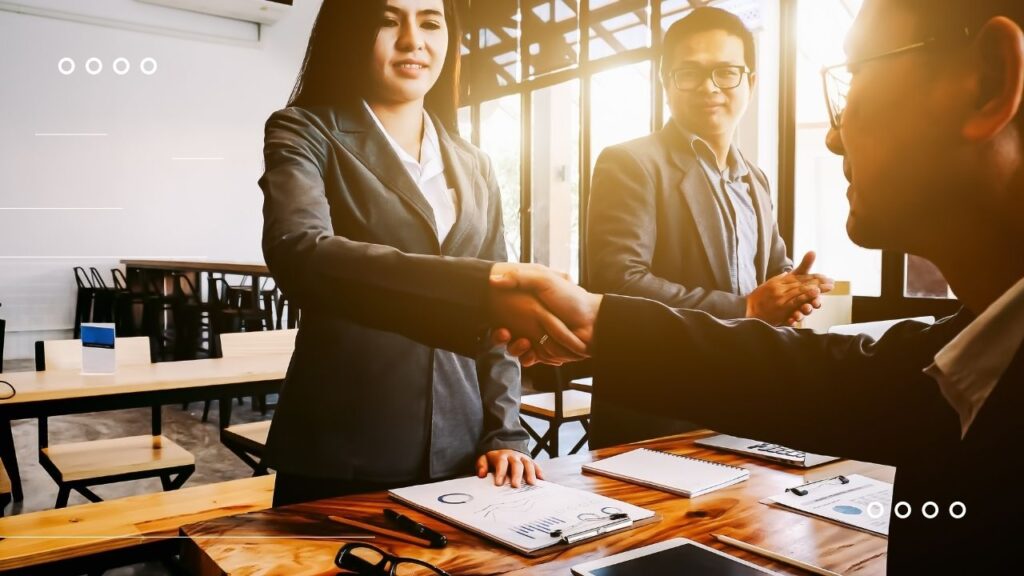
The contract mainly includes the purchase price, payment structure, representations, and post-closing obligations of the company. The entire process can be tedious and even challenging, which is why it is imperative to have expertise in legal and business matters in such transactions. I discuss with you the following elements of strategy.
It is very important and useful to know the objectives of any merger and acquisition agreement before starting negotiations. Because also such deals require strategic reasoning and assessments of the risks and challenges involved against the desired outcomes. Therefore, such targets must be aligned with the focus and acquisition priority and targets.
Negotiations for merger and acquisition agreements require the involvement of individuals who are well-versed in legal, financial, and business skills. They should have a clear understanding of the objectives and process of the deals. Also, such a team should be led by an experienced senior executive. And such senior executives should have entire authority and power to make all decisions on behalf of the company.
Identify your priorities for any successful negotiation, then create your fantasy plan. And the obstacles or challenges encountered during the implementation of the strategy have to be considered and prepared realistically. It must keep in mind that such a strategy should not adversely affect the objective of the company and the interests of all the parties associated with engaged to the company.
Any merger and acquisition agreement contains its terms and conditions. Such terms and conditions that provide the right fuel to the company deal, so that the purchase price payment structure, including representations and warranties and post-closing liabilities of the company, are discussed are necessary and imperative. So it is very necessary and imperative in the interest of the company for the senior executives to recognize and understand such terms and conditions.
In any merger and acquisition agreement, certain apparent or hidden risks and challenges may arise prior to the execution of the agreement. Thus, it is necessary to identify such risks and challenges in the first place, Also it is far better to prepare and implement a strategy to overcome them. However, this includes identifying deal breakers, understanding the legal regulatory environment, and preparing a contingency plan.
Any merger and acquisition agreement has to consider various closing obligations such as employment agreements, competitive and non-compete agreements, and transitional services. It is beneficial to understand these obligations and execute negotiations by imposing terms that are favorable to the company. Primarily transit services and employment and non-competition matters are imperative so that they cannot be neglected.
Before negotiating a company's merger and acquisition agreement, Remember, it is important to be aware the said process can a tense and adversarial. Thus, it is important to maintain the importance of relationships as the process is based on trust and respect.
The process of merger and acquisition mainly involves legal matters and understanding the intricacies of such legal matters and optimizing the adversities therein becomes very necessary and imperative. Also, since mergers and acquisitions involve multiple interests, it is necessary to tailor the rules and conditions to navigate the contractual deal toward success. Hiring a law firm that specializes in mergers and acquisition contract negotiation helps in identifying the company in a timely manner.
Forbes has also expressed its views on mergers and acquisitions.

Since there is a competitive environment in company merger and acquisition agreement negotiations, two or more parties may be involved in the environment. Also, the size and nature of the M&A contract negotiated deal may vary depending on various factors. Also along with this, the complexity of the law the many parties involved in the M&A contract negotiation, the number of companies being acquired and the level of demand of the companies, and the market conditions are all taken into consideration at the time of negotiating the company's merger and acquisition agreement. The year 2020 saw an increase of three percent in mergers and acquisition activities to 6.3% percent despite the adverse market conditions and challenges arising after the Covid-19 pandemic. This indicates that there is still fierce competition in the market for merger and acquisition deals. Deloitte reported and also states that sectors such as technology, healthcare, and life sciences have felt an increase in the highest levels of merger and acquisition activity. Because it involves the interests and benefits of more than two parties, all parties can see the maximum value of their investment. When the assets of any merging or acquiring company are high, such a company is vying for a takeover. The cost of mergers and acquisitions is quite likely to increase very optimistic manner. And also it has the potential to challenge the status quo of such deals.
Any private companies and buyers are very aware of this matter. The report done by PWC has specifically mentioned this matter. Negotiation of mergers and acquisitions can be a very competitive field. The market has faced a promising increase in global activity due to the challenges that have arisen during the Covid-19 pandemic. Also, companies and investors seeking to engage in merger and acquisition agreement negotiations transactions should determine and determine their value by engaging in the negotiation and process to plan and execute the opportunities and competition rather than ignoring the competitive factor.
Today we will talk about the Top merger and acquisition law firms. After the recent global upheaval, the demand for business expansion and consolidation processes to tap into new markets in the corporate world around the world is in full swing. Companies in every country are ready, enterprising and proactive in seeing opportunities beyond the country's borders for expansion and growth in other countries.
There are certain complexities, challenges and risks facing cross-border mergers and acquisitions. This requires expert and experienced legal counsel to expect successful results. Here today. We will discuss with you the role of Top merger and acquisition law firms. And how they can help you easily navigate the complexities of your international transactions.
Today we will talk about the Top merger and acquisition law firms. Law firms are considered to be key players for cross-border operations. Because there is an element of experience, expertise and expertise in the proposition that law firms offer to their clients. Due to which they are constantly dynamic in all transactions of the process. He has knowledge and experience of various legal regulations and jurisdictions in various sectors, due to which he constantly strives to successfully navigate cross-border legal intricacies while accompanying his clients by understanding the intricacies of the regulations.
The process of cross-border mergers and acquisitions is mainly divided into three sections. In the first section, it becomes imperative to clarify the type of merger or closure intended keeping in mind the nature of the deal and demand. In the second stage, information about company history, attitude, capital, and the aptitude of employees etc. is used to review buyers and sellers either traditionally or with the help of online data technology.
While in the third and final stage, based on the data obtained, the cost-benefit ratios of various options are considered and work is started on it by choosing the right option and selecting the right option. However, cross-border legal advisors with their experience, knowledge and expertise in these aspects are equipped to navigate their clients out of the law's intricacies in a timely manner to a successful outcome.
The advantages of hiring a legal advisor in international cross-border are many but considering the word limit of this article let me start by discussing the main advantages with you as mentioned below.Please keep in mind.
Cross-border M&A legal advisors are skilled and experienced as they operate internationally. They stay with you and provide you with legal supportive advice whenever you need it. We organize your international transactions in such a way that legal rigorously is removed and legal risk is mitigated.
International Cross-border M&A rules and practices vary from country to country. so cross-border M&A legal advisor with a thorough understanding of local laws and regulations can help you identify and understand legal liability and risk, mitigate legal risk, can prepare you a strategy.
Sometimes you have to follow the rules to get legal rights when you don't have access to cross-border M&A legal counsel. If execution of law activity isn’t done, the business could be subject to pricey legal battles, hefty fines, and reputational harmful.
Due to the element of inertia in cross-border M&A legal frameworks, there is ample scope for delays. As a result, the possibility of increasing resentment and disputes cannot be ruled out. Cross-border M&A legal advisors are skilled and experienced in this type of work, ensuring compliance with the law by reducing the amount of dependency and inertia, avoiding delays and helping you develop new relationships.

Today we are here to discuss in detail the criteria for selecting good Cross-Border M&A lawyers.
Cross-border legal advisors provide services related to international legal transactions like legal due diligence, structuring of transactions, negotiation of transaction documentation issues, enforcement of regulations, post-transaction assistance.
One of the greatest qualities of a lawyer skilled in Cross-Border local laws is that they have acquired in-depth expertise in local Cross-Border M&A laws. They work with entrepreneurs with a deep understanding of law, Cross-Border institutions, Cross-Border M&A transactions and industry needs, and have the ability to direct them.
Cross-Border M&A legal advisers who have financial legal expertise and experience in the legal landscape may have a higher success rate. That's why they increase the chances of success in your case as well.
Sometimes the best Top merger and acquisition law firms you can find are very difficult to reach. It is very important to be diligent in your work, but if a Cross-Border M&A legal advisers are unavailable and not accessible, then such a Top merger and acquisition law firms can be dull. And it can affect legal matters related to your work. So you should hire a Top merger and acquisition law firms who is available to you and takes care of your financial issues.
The Top merger and acquisition law firms you want to hire should be adept at communication. Must be understanding and interested in your needs and your legal rights. Therefore, they can explain well and bring you success.
You want to hire a lawyer who has a good reputation in the legal world. And they are known for providing high quality legal services. Online reviews of their legal services can be read and verified. In short, you can be sure that the Top merger and acquisition law firms you want to hire offer good professional services in your business world and you can be sure that they will provide you with accurate legal representation.
Fluency in language and cultural matters is a critical aspect of Top merger and acquisition law firms' success. Linguistic and cultural issues are often seen as barriers in cross-border M&A transactions. Therefore, cross-border M&A should engage a legal advisor who has a strong command of the language and culture.
The size of the transaction, the complexity of the deal, and the law firm's reputation all influence the fee structure for a top merger and acquisition law firm. As well as. These businesses typically impose a fee that ranges from 1% to 5% or more of the total transaction amount.
Some businesses may also bill by the hour, particularly for jobs like contract review and negotiation, due diligence, and review. Hourly charges vary depending on the experience of the lawyer.
It is important to keep in mind, that the costs associated with M&A transactions can be substantial. As well as. The choice of which legal firm to hire will be based on the client's individual objectives and priorities as well as the firm's experience, performance history, and reputation in the M&A market.
I am sharing with you the names of some companies as examples to show you the forms and transactions of successful cross-border M&A and business combinations from one country to another country in the world. Hope these examples inspire you.
As per record in 2000, UK-based telecommunications company Vodafone merged Mannesmann, one of the largest M&A deals in the company's 22-years history.Please keep in mind
As per record in 2016, Belgium-Brazil-based bevrej company Anheuser merged Busch Inbev, one of the largest M&A deals in the company's 22-years history. Please keep in mind.
As per record in 2007, Indian-based steel Company Tata steel merged Corus group, one of the largest M&A big deals in the company's 15-years history.Please keep in mind.
As per the record in 2016, Japanese -based company Soft bank merged semi-conductors and software-designed ARM Holdings, one of the largest M&A deals in the company's 07-years history. Please keep this in mind.
As per the record in 2016, china-based company Lenovo merged IBM engaged in PC business, one of the largest first transaction of cross-border M&A deals in the company's 07-years history. Please keep this in mind.
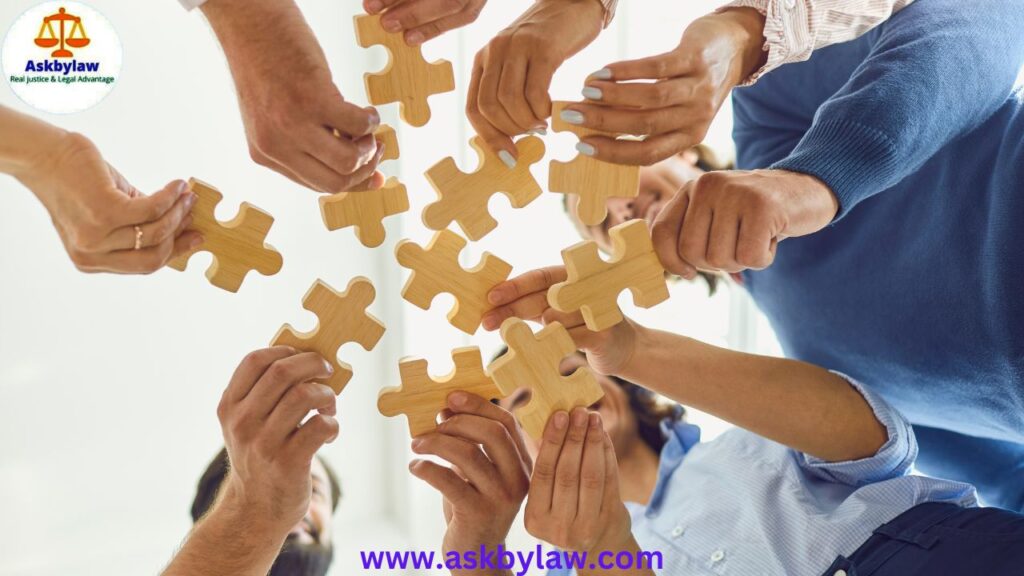
Cross-border transactions are becoming a positive industry habit. Companies are now eager and able to grow and expand beyond their country's borders and take flight to realize their dreams and goals. But in order to meet the challenge and win the dreams and goals, it is necessary to work closely with the Top merger and acquisition law firms to complete the cross-border transactions on time because the Top merger and acquisition law firms dissolve the rigidity of the code.
Being able to To negotiate the terms of the deal and navigate the company towards growth and achievement while staying within the legal framework. Also, Top merger and acquisition law firms are not only legal, but also financial, linguistic and cultural, with experienced knowledge of local laws and can successfully answer and guide compliance questions. So choosing the right Top merger and acquisition law firms can help the company grow and expand while avoiding unwanted failures.
Processing mergers and acquisitions with Top merger and acquisition law firms are supported by a trained specialist team of legal advisors. Also Top merger and acquisition law firms give you full assurance that your company's transactions are running smoothly and successfully as per the law and its regulations. Due to which you don't have to face any kind of legal risks and redundancies.
Are you ready to starting a startup with no experience? But you have no understanding or knowledge of where or how to start. And, so you are confused, and you find the task of starting a startup impossible. as well as. Our Askbylaw Associates (law firm) provides you with the necessary advice and strategy to launch a new startup. Don't stop if you don't have experience. What great support.
.Askbylaw law firm provides accurate guidance from the beginning of the startup registration process to running your startup in accordance with all laws. If you are a graduate or a new career starter, don't worry. That this reason. This article will explain to you how to use useful knowledge and necessary resources to start a new startup. I hope you will not hold back from turning your idea into a grand success. Know more…
Are you interested in reading about Retrenchement of employee
you see first. The journey of starting a new business or company is full of ideas, strategies, enthusiasm, and adventure. as well as. According to the law of new startups, every new startup takes risks and ventures in order to realize its potential in every field. And. This new venture aims to be a market leader by catering to the needs of the human market. In our experience, some startups may be small in size and limited in resources. As well as. But if such a small startup starts, it climbs the ladder of success in the future and sets new standards for startups. What a great idea. The legal requirements of a new startup require special attention and enforcement of registration. like raising funds, protecting intellectual property, complying with tax laws and employment laws, as well as contracts with customers, suppliers, and other individuals. Learn more…
Are you interested in reading about Layoff versus Termination
Build your product or services as a brand

To know more about the importance of understanding entrepreneurial law for startups please open and read our other article link provided here.
Raising capital is the main agenda of any new startup. Various legal precedents for raising capital for a new business have been discussed with you here below. Hope you find it helpful.
Venture capital is the provision of capital services to a newly launched or developed startup by a legal entity providing capital. Thus, there is a possibility that if the growth rate of the new startup is higher than expected and your startup is entering a new phase of growth, such venture capital providers may prefer to get equity in return for their capital and board off your new startup. Gets position as director.
Another has angel investment. This is an individual investor and is seen by the individual investor providing capital to run or grow your new startup. Such investors get an ownership stake in your new startup in return for an investment. And sometimes even found connecting with your founders.
Crowdfunding sees startups soliciting microcontributions from people over the Internet to finance their idea or event. There are different methods of crowdfunding, which I tell you about below.
Reward Fund: These types of investors give you capital in small portions. But they don't get any share in the new startup's production or sales, nor do they get equity with the founders.
Equity fund: Such investors get a place in a new startup in exchange for their own capital.
Debt-based fund: Such an investor gets an interest amount from the founders of the new startup in exchange for their capital.
Crowdfunding can prove to be a successful option for raising capital for a new start-up. But for that, you have to convey the benefits of your product or service to the internet users and get their acceptance. Such investors are also seen establishing their own communities.
Crowdfunding can prove to be a challenging option for raising capital for a new start-up. So you should decide whether to use this option or not by getting enough knowledge about its pros and cons; otherwise, your startup may run into trouble.
Are you interested in reading about Terminated employee
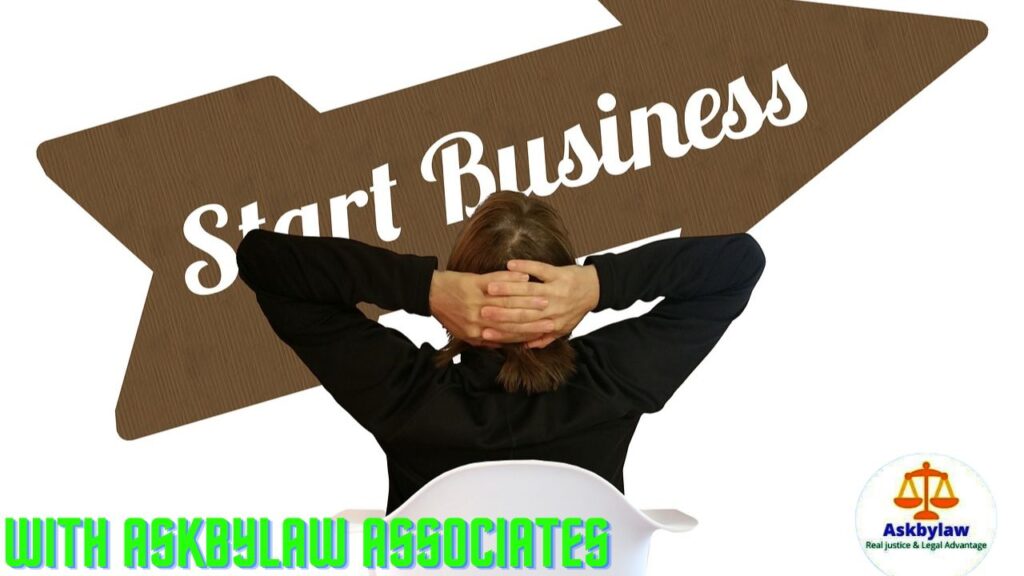
The cost of starting a new startup depends on the location, type, and size of the new startup and federal laws. Also, the cost of starting a new startup can be estimated based on the following factors.

Starting a new startup without experience is full of challenges and adventure. However, such a venture can also be beneficial. As well as. It requires foresight and a thorough strategy. And your eagerness to learn as you progress is also very important. As well as. A wide network and guidance or advice from experienced entrepreneurs can be very useful to you in a new startup. And. Also, your determination and hard work have the ability to turn your dream into reality. Please to be noted this.
To promote new startups, here I am sharing some resource information for you to get more information. Please keep this in mind.
You see first. Wow. Adherence to federal laws and regulations is essential for starting and growing any startup. Why is this? It is a sign of winning entrepreneurship to prepare and implement legal advice and strategy before starting a new startup of any kind anywhere. Please take note.
You need to be firm about your legal prospects. Discuss with our expert lawyers. Our expert attorneys we will help you navigate the legal process and protect your constitutional rights. Call today to schedule your appointment without wasting time.
Definitely, you can run your company personally. For this, you have to choose the limited liability option. This requires your vision and goals to be set, and neglecting legal matters can trouble you.
1. The organic idea 2. Bold team 3. Strong Execution 4. Solid business structure
You like. Home Loan Law and Home Loan is an indispensable necessity for human beings. A home loan is often indispensable after the marriage ceremony of a person, buying a house is the basic dream and dream of every person. But due to a lack of sufficient knowledge, man has to face some unnecessary struggles in fulfilling this need.
Home loan law. Like how to get a loan? What to do to apply for a loan? Where are the documents to be submitted to get the loan? How is the loan installment determined? All these basic questions need to be answered before availing of a home loan.
You read it. It is better for every loan aspirant to get a loan by considering how he will repay it. Lending institutions check a person's credibility and score before granting a loan.
You like it. If a person gets a loan without planning how he will repay the loan installments, he may also get into financial trouble. And the lending institution can take possession of the hard-earned property and dispose of it in its own interest. As much as. That is why it is more important for everyone to plan how they will repay the loan before getting a loan. Because at any time in human life there are ups and downs.
Today I'm here to discuss with you in this article how to buy a house well. And. I hope you will like and find my discussion on buying a home loan useful today.
Consult your home loan law question-814.004.3411
Are you passionate to read this: https://askbylaw.com/Catagory/real-justice-by-gujarat-high-court-on-tax-refund/
You like. Loans can be obtained in different ways as the needs of people are different. Such as salaried individuals, self-employed individuals, personal loans, business loans, vehicle loans, etc. As much as. Let us try to understand with the help of the table given below where the evidence has to be given to the lender to get such a loan.
For salaried person |
For professional person |
For Personal |
For Business person |
Evidence of resident |
Income tax return |
Proof of identity |
Pan card |
Proof of Identity |
Evidence of resident |
Proof of resident |
Adhar card |
Bank statement/ Passbook |
Proof of identity |
Bank statement/ Passbook |
Passport |
Salary slip and form no. 16 |
Bank statement/ Passbook |
Salary slip and form no. 16 ( Only employee) |
Voter ID card |
All documents of the property |
License of Profession |
Form no. 26A (only professional) |
Driving license |
Passport photograph |
Single Passport photograph |
Passport photograph |
Income-tax return verified by CA |
Pan card |
Copy of Pan card |
Pan card |
Registration certificate of business |
Cibil score |
All documents of the property |
Cibil score |
Partner sheep deed- in case of partnership |
Cibil score |
Resolution- in case of company and trust |
||
Memorandum of the articles-in case of the company |
|||
Articles of the association-in case of the company |

Watch if you like. Every lending institution first wants to study the legal title and status of the property. As well as. On which the loan is to be made before extending the loan. Because it is only after the legal study that the lending institution decides, whether to mortgage the property or not. Please be noted.
You see first. That is why every lending institution appoints its own legal advisors. As well as. The legal advisors of the lending institution give a written opinion on whether the property is loanable. As much as. Which we also know as Legal Opinion. Please to be noted this.
As much as. It is your duty to ensure that your property is not adversely affected by any legal complications regarding the mortgage. Please to be noted this. Read more…
You like first. As you are not aware of the professional competence and reputation of reference of the property legal advisors appointed by the lending institutions. As well as. And so. It is advisable for you to hire a legal advisor to assess your personal property. As much as. The legal advisor you hire can study every corner of the property and give you factual information about the legal side of your property. Please to be noted this. Read more…
You like it. There are different laws regarding local construction and permits for building a property. As well as. Whether the holder of the property and the borrower can easily transfer the title of the property to the lender? As much as. The matter is investigated by the legal advisors of the lending institutions. Please to be noted this. Read more…
If we discuss Section 50C of the Indian Income Tax Act. As stated in it, the stamp duty amount can be increased if the stamp valuation of the property is higher than that stated in the agreement. As much as. If the stamp valuation is above 100% of the contract. As well as. It is treated as the income of the seller and buyer of the property. Please to be noted this.
You see. In order to get a loan. As well as. If the loan is done on the property by studying and planning the other laws related to the property like a transfer of property, gift, HUF law, Revenue code, Tenancy act, Town planning act, Succession act, etc. As much as. Then the property mortgagor does not face any legal problems. Please must be noted.

Viren Dave Viren Dave is a warrior-tested senior recognize Advocate in India-Gujarat with solution-based records of achieving and fighting to protect and assert his client’s client's constitutional and contractual rights in judicial forums across the conclusion
Consult your home loan law question-814.004.3411
As per the foundations of the Bar Council of Bharat (India), Advocate Viren.S.Dave isn't permissible to solicit work and advertise. By clicking the “Agree” button and accessing this web site (www.asklbylaw.com) the user absolutely accepts that you just Maineasure seeking info of your own accord and volition which no kind of solicitation has taken place by me.The info provided below this web site is exclusively accessible at your request for information functions solely. It mustn't be understood as soliciting or advert. Advocate Viren.S.Dave isn't accountable for any consequence of any action taken by the user hoping on material / info provided below this web site. In cases wherever the user has any legal problems, he/she altogether cases should obtain freelance legal recommendation.